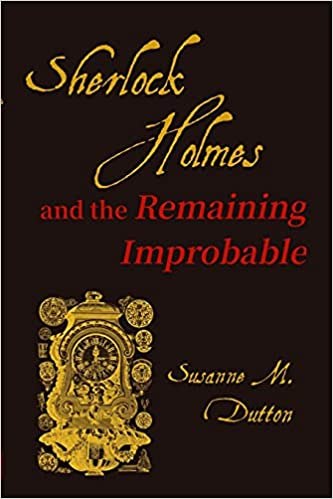
The most unique and outrageous Holmes adventure you’ll never hear about . . .






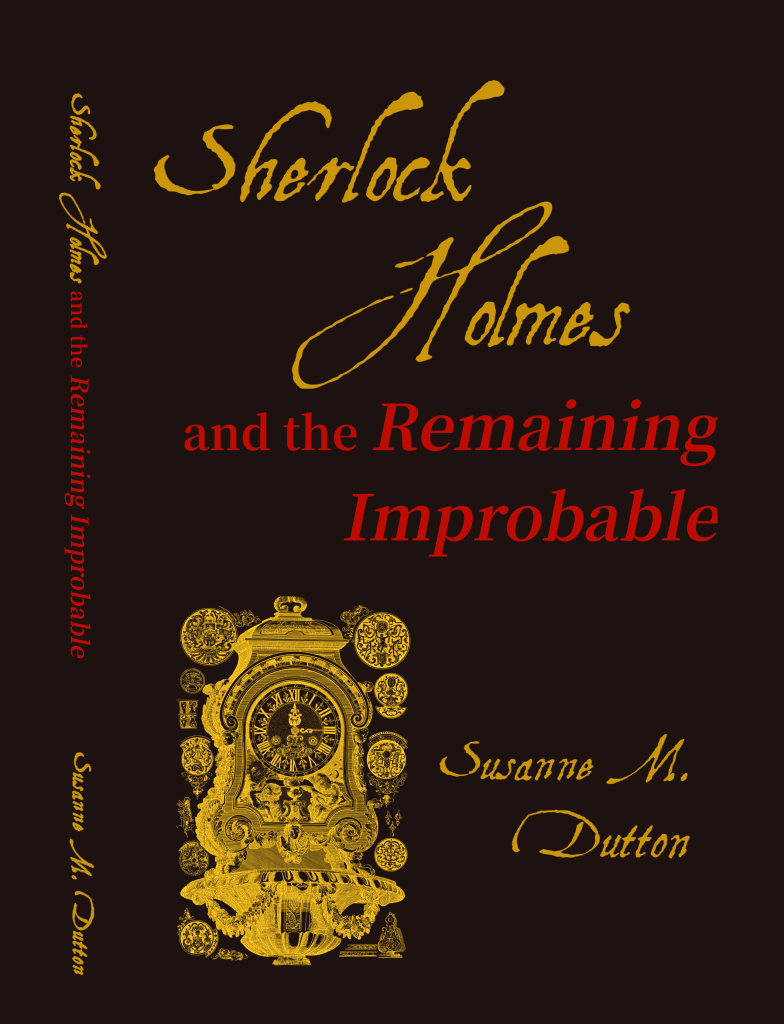
Sherlock fans looking for a unique story about their beloved hero should check this out!
Susanne M. Dutton is a Philadelphian writing fiction and poetry. She’s the one who hid during high school gym, produced an alternative newspaper and exchanged notes in Tolkien’s Elfish language with her few friends. While earning her B.A. in English, she drove a shabby Ford Falcon with a changing array of homemade bumper strips: Art for Art’s Sake, Forgive Us Our Trespasses, Free Bosie from the Scorn of History. Later, her interests in myth and depth psychology led to graduate and postgraduate degrees in counseling.
Nowadays, having outlived her mortgage and her professional counseling life, she aims herself at her desk most days; where she tangles with whatever story she can’t get out of her head.
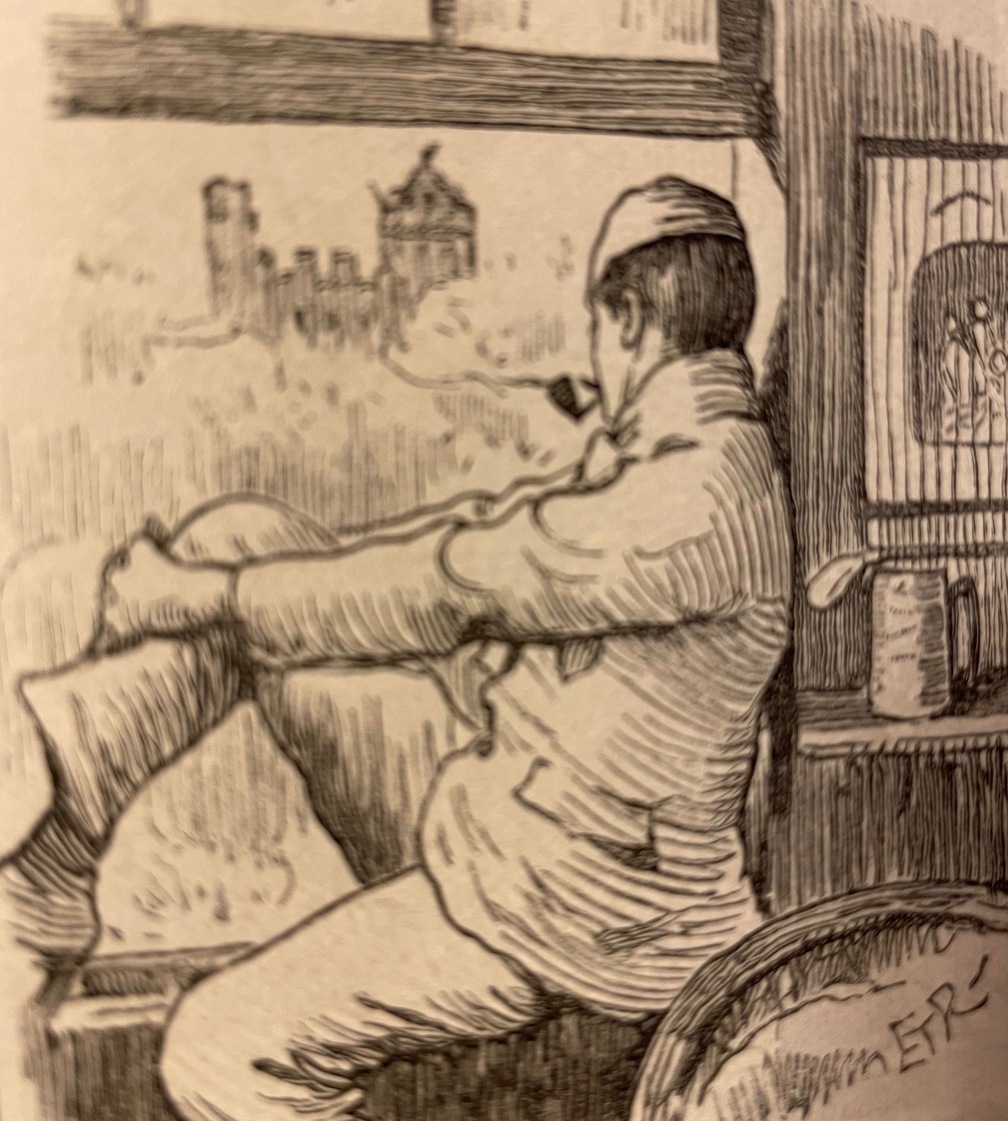

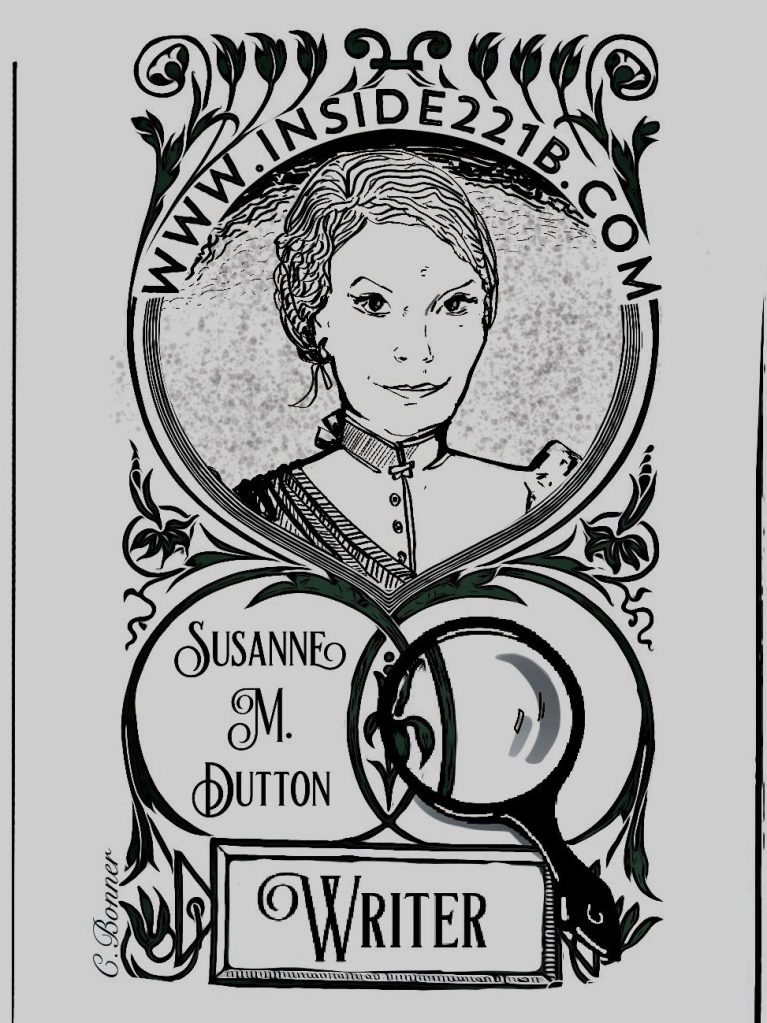
Susanne M. Dutton is a Philadelphian writing fiction and poetry. She’s the one who hid during high school gym, produced an alternative newspaper and exchanged notes in Tolkien’s Elfish language with her few friends. While earning her B.A. in English, she drove a shabby Ford Falcon with a changing array of homemade bumper strips: Art for Art’s Sake, Forgive Us Our Trespasses, Free Bosie from the Scorn of History. Later, her interests in myth and depth psychology led to graduate and postgraduate degrees in counseling.
Nowadays, having outlived her mortgage and her professional counseling life, she aims herself at her desk most days; where she tangles with whatever story she can’t get out of her head.

Thank you to the author for providing me with this book in exchange for my honest opinion. Sherlock Holmes and the Remaining Improbable is available for purchase now.
I am very picky when it comes to Sherlock Holmes and how he’s represented. I am not an expert or anything like that, but I’m a big fan of Conan Doyle’s famous detective and have read the original mysteries more than once…
View original post 254 more words


Susanne Dutton is a Philadelphian writing fiction and poetry. She’s the one who hid during high school gym, produced an alternative newspaper and exchanged notes in Tolkien’s Elfish language with her few friends. While earning her B.A. in English, she drove a shabby Ford Falcon with a changing array of homemade bumper strips: Art for Art’s Sake, Forgive Us Our Trespasses, Free Bosie from the Scorn of History. Later, her interests in myth and depth psychology led to graduate and postgraduate degrees in counseling.
Nowadays, having outlived her mortgage and her professional counseling life, she aims herself at her desk most days; where she tangles with whatever story she can’t get out of her head.
Born in Des Moines, Iowa, Susanne grew up in the SF Bay Area, has two grown children, and lives with her husband in an old Philadelphia house, built of the stones dug from the ground where it sits.

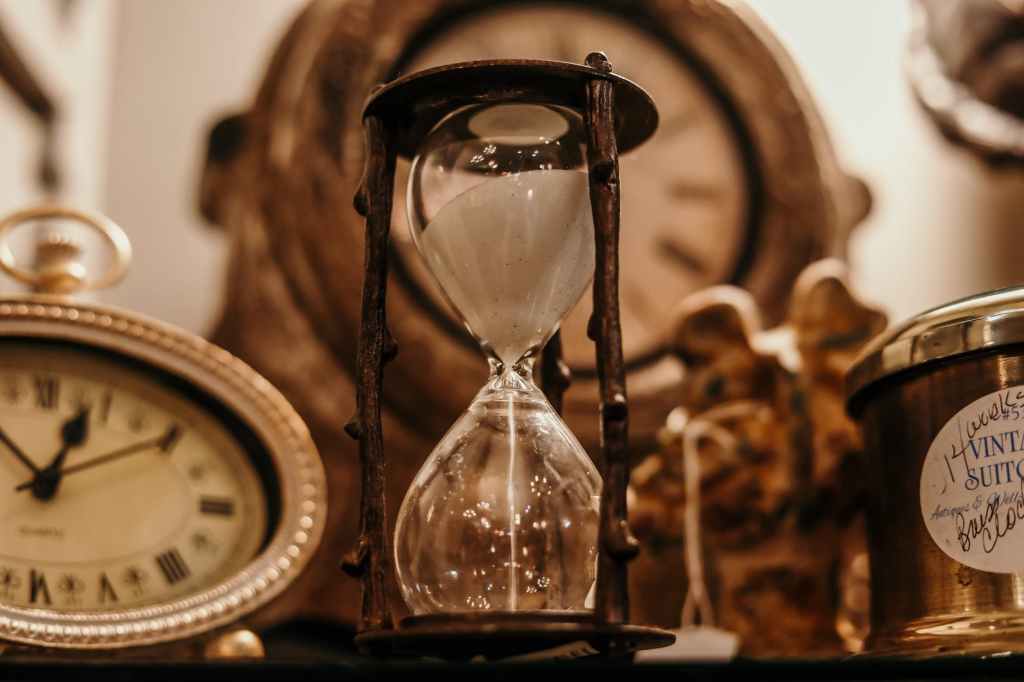

Susanne Dutton is a Philadelphian writing fiction and poetry. She’s the one who hid during high school gym, produced an alternative newspaper and exchanged notes in Tolkien’s Elfish language with her few friends. While earning her B.A. in English, she drove a shabby Ford Falcon with a changing array of homemade bumper strips: Art for Art’s Sake, Forgive Us Our Trespasses, Free Bosie from the Scorn of History. Later, her interests in myth and depth psychology led to graduate and postgraduate degrees in counseling.
Nowadays, having outlived her mortgage and her professional counseling life, she aims herself at her desk most days; where she tangles with whatever story she can’t get out of her head.
Born in Des Moines, Iowa, Susanne grew up in the SF Bay Area, has two grown children, and lives with her husband in an old Philadelphia house, built of the stones dug from the ground where it sits.

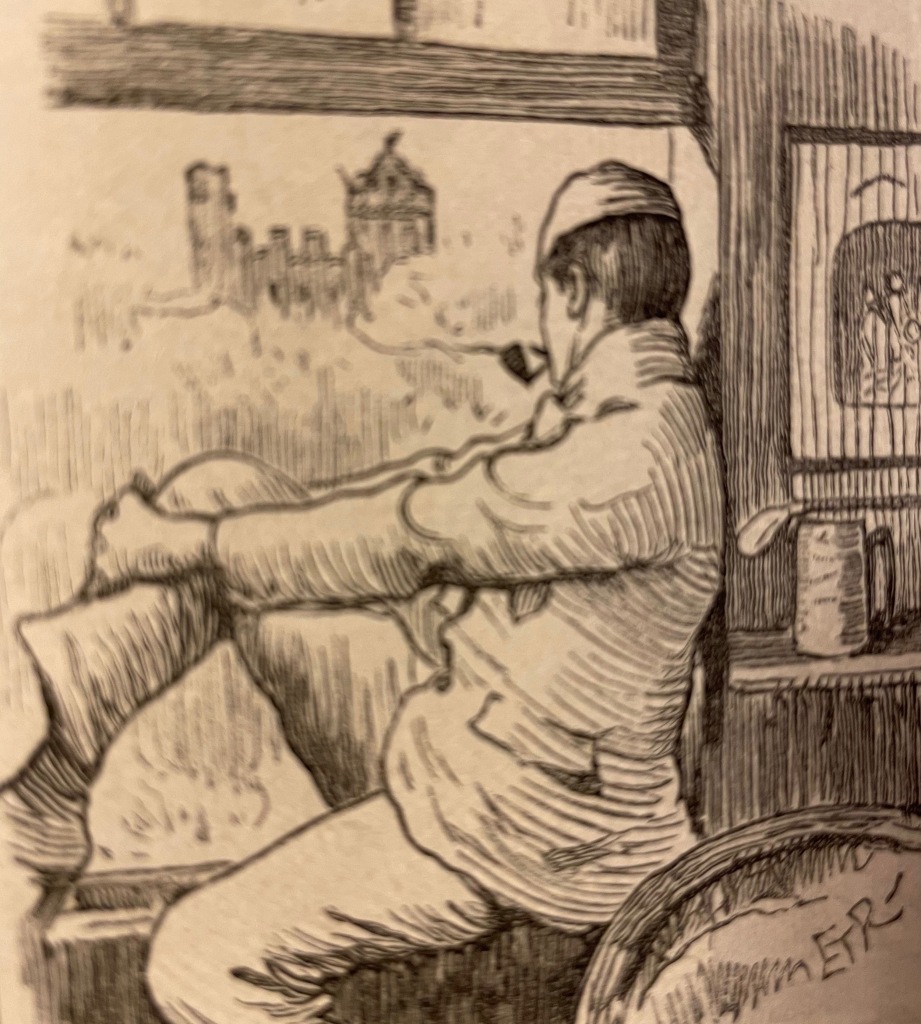

Available Now from Propertius Press and Amazon at links below~

Susanne M. Dutton is a Philadelphian writing fiction and poetry. She’s the one who hid during high school gym, produced an alternative newspaper and exchanged notes in Tolkien’s Elfish language with her few friends. While earning her B.A. in English, she drove a shabby Ford Falcon with a changing array of homemade bumper strips: Art for Art’s Sake, Forgive Us Our Trespasses, Free Bosie from the Scorn of History. Later, her interests in myth and depth psychology led to graduate and postgraduate degrees in counseling.
Nowadays, having outlived her mortgage and her professional counseling life, she aims herself at her desk most days; where she tangles with whatever story she can’t get out of her head.
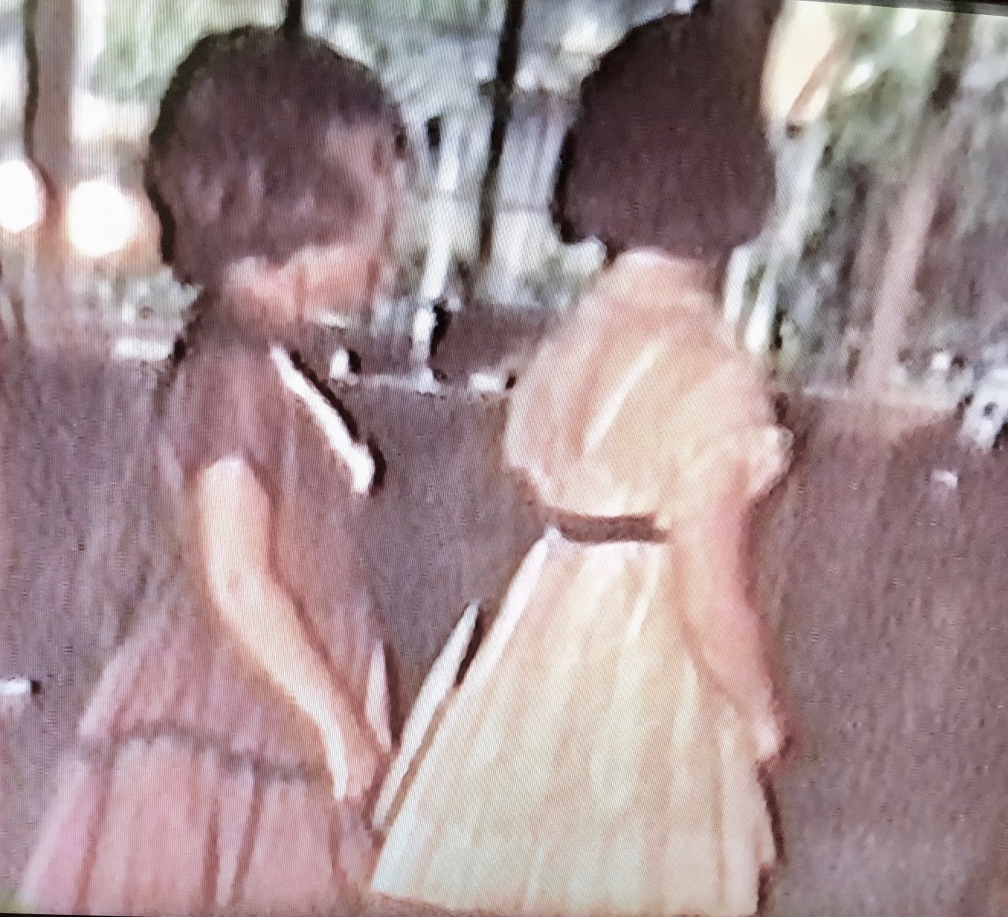
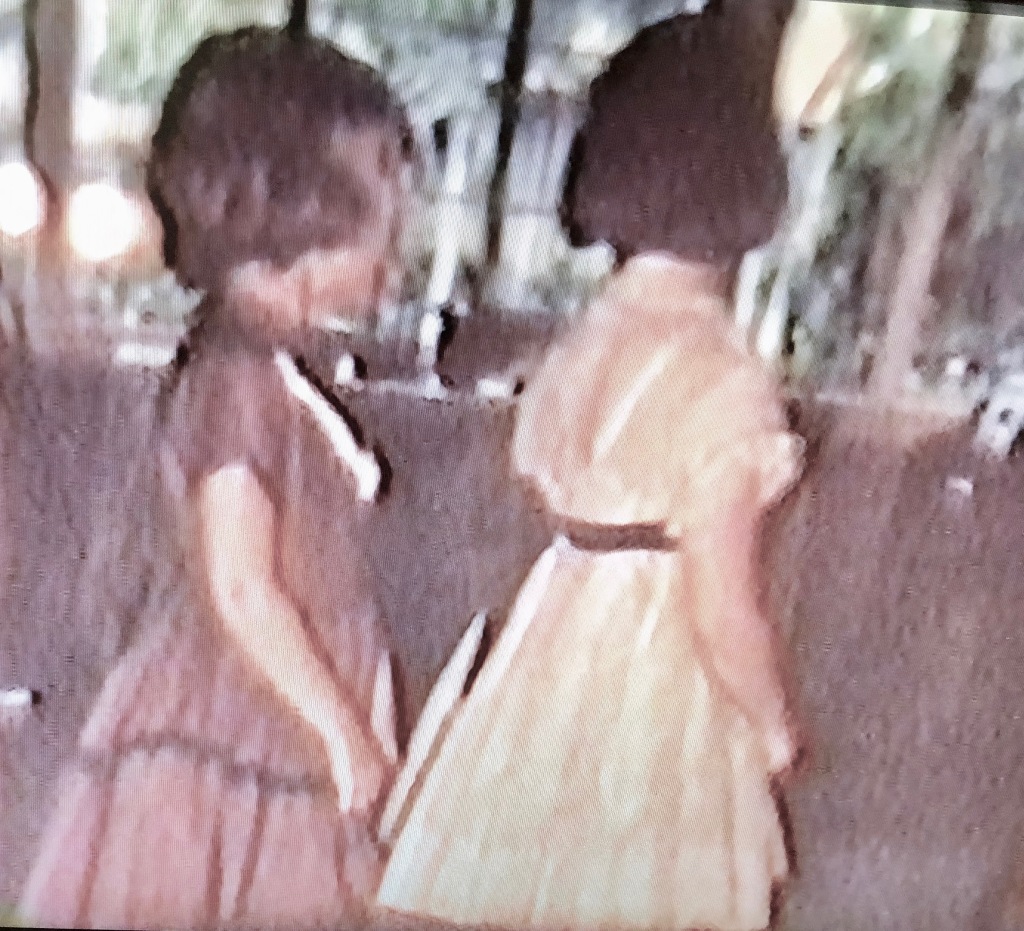
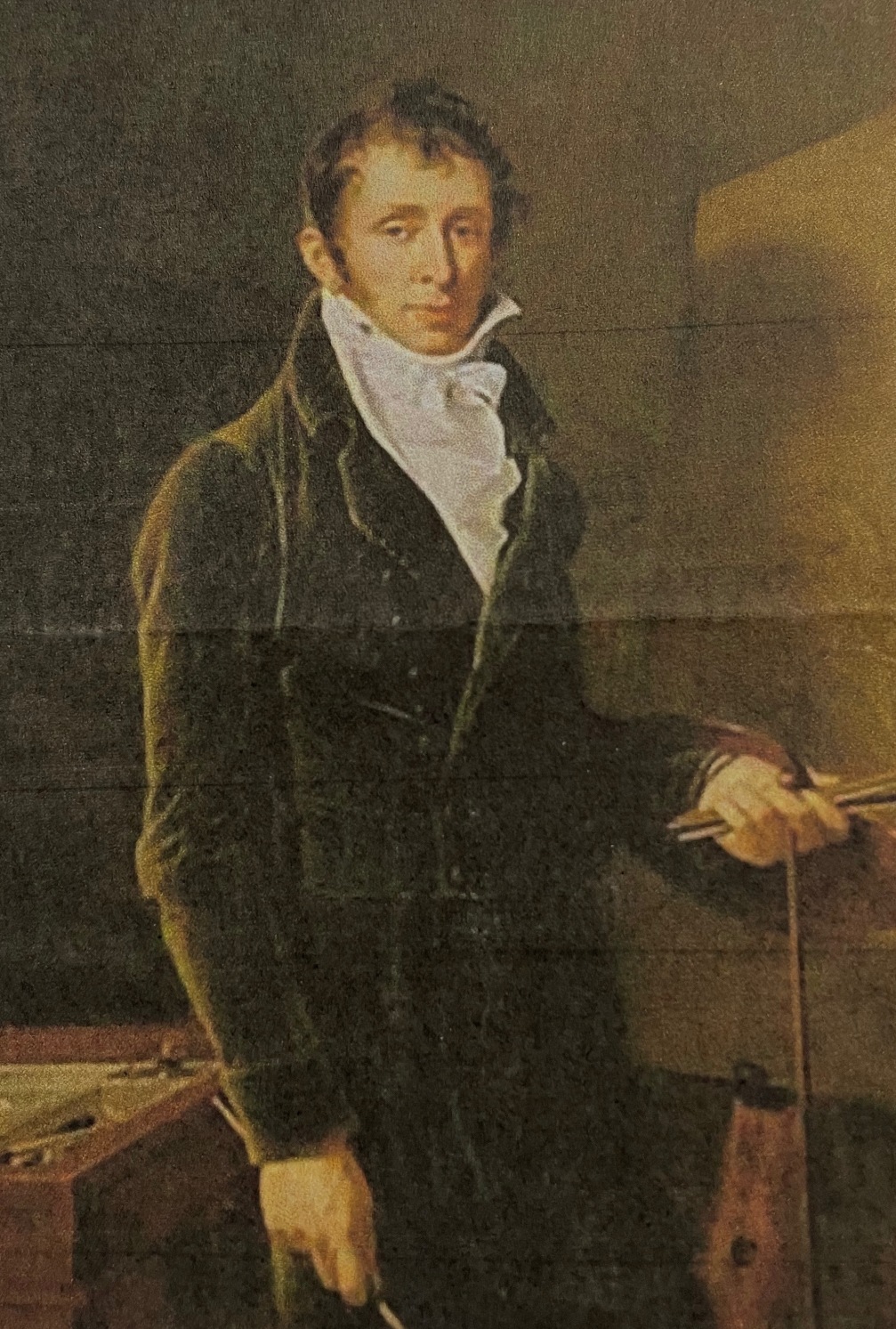
Susanne Dutton is a Philadelphian writing fiction and poetry. She’s the one who hid during high school gym, produced an alternative newspaper and exchanged notes in Tolkien’s Elfish language with her few friends. While earning her B.A. in English, she drove a shabby Ford Falcon with a changing array of homemade bumper strips: Art for Art’s Sake, Forgive Us Our Trespasses, Free Bosie from the Scorn of History. Later, her interests in myth and depth psychology led to graduate and postgraduate degrees in counseling.
Nowadays, having outlived her mortgage and her professional counseling life, she aims herself at her desk most days; where she tangles with whatever story she can’t get out of her head.
Born in Des Moines, Iowa, Susanne grew up in the SF Bay Area, has two grown children, and lives with her husband in an old Philadelphia house, built of the stones dug from the ground where it sits.

Susanne Dutton is a Philadelphian writing fiction and poetry. She’s the one who hid during high school gym, produced an alternative newspaper and exchanged notes in Tolkien’s Elfish language with her few friends. While earning her B.A. in English, she drove a shabby Ford Falcon with a changing array of homemade bumper strips: Art for Art’s Sake, Forgive Us Our Trespasses, Free Bosie from the Scorn of History. Later, her interests in myth and depth psychology led to graduate and postgraduate degrees in counseling.
Nowadays, having outlived her mortgage and her professional counseling life, she aims herself at her desk most days; where she tangles with whatever story she can’t get out of her head.
Born in Des Moines, Iowa, Susanne grew up in the SF Bay Area, has two grown children, and lives with her husband in an old Philadelphia house, built of the stones dug from the ground where it sits.






Susanne Dutton is a Philadelphian writing fiction and poetry. She’s the one who hid during high school gym, produced an alternative newspaper and exchanged notes in Tolkien’s Elfish language with her few friends. While earning her B.A. in English, she drove a shabby Ford Falcon with a changing array of homemade bumper strips: Art for Art’s Sake, Forgive Us Our Trespasses, Free Bosie from the Scorn of History. Later, her interests in myth and depth psychology led to graduate and postgraduate degrees in counseling.
Nowadays, having outlived her mortgage and her professional counseling life, she aims herself at her desk most days; where she tangles with whatever story she can’t get out of her head.
Born in Des Moines, Iowa, Susanne grew up in the SF Bay Area, has two grown children, and lives with her husband in an old Philadelphia house, built of the stones dug from the ground where it sits.
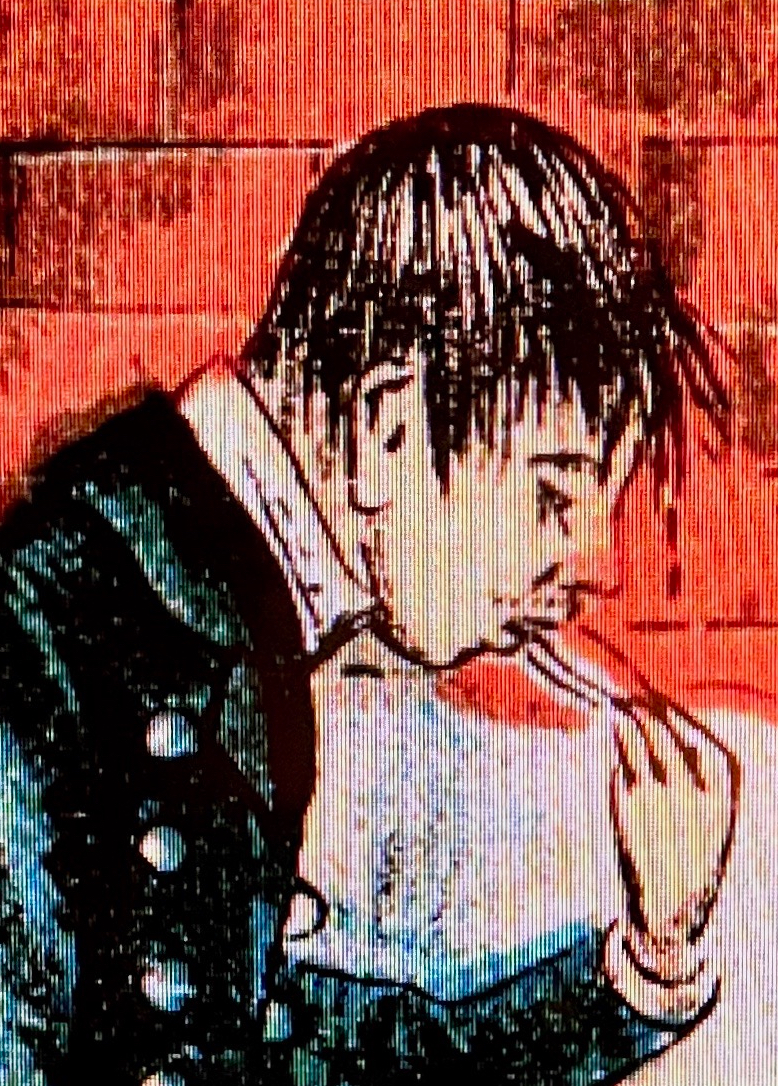
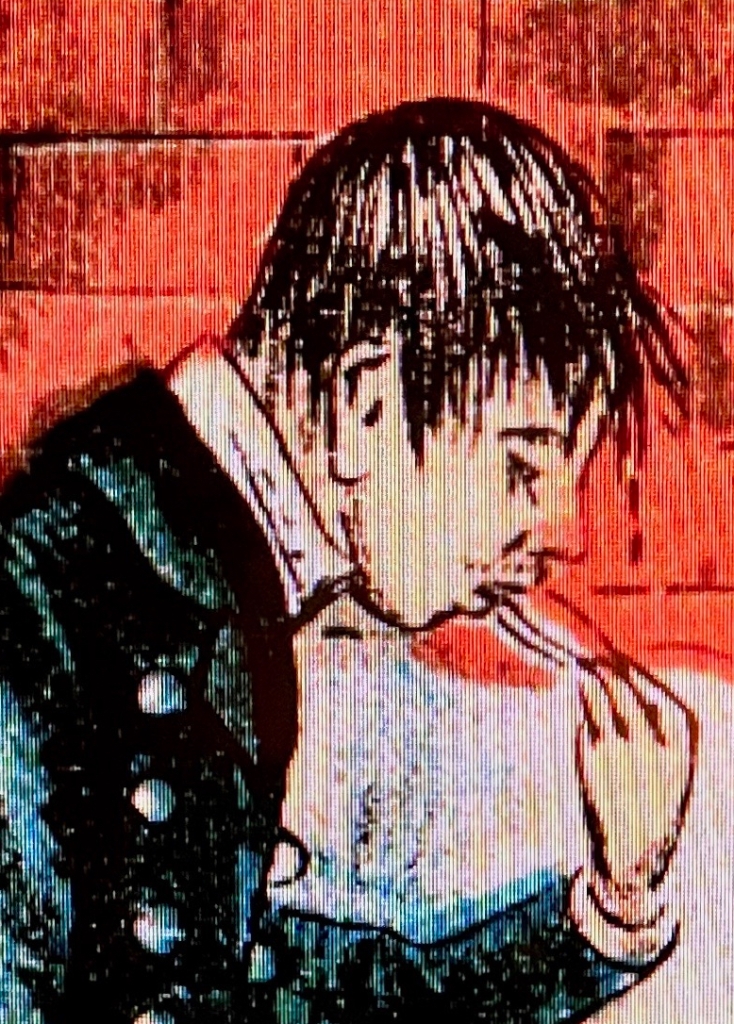
FAMILY MOURNING,made up and trimmed in the most correct and approved Taste, may be obtained at the most reasonable Prices, at Peter Robinson’s. Goods are sent free of charge, for selection, to all parts of England (with dressmaker, if desired) upon receipt of letter, order or telegram; and Patterns are sent with Book of Ilustrations, to all parts of the world.The Court and General Mourning Warehouse,256-262, Regent Street, London; The Largest Mourning Warehouse in Europe.
PETER ROBINSON’S.

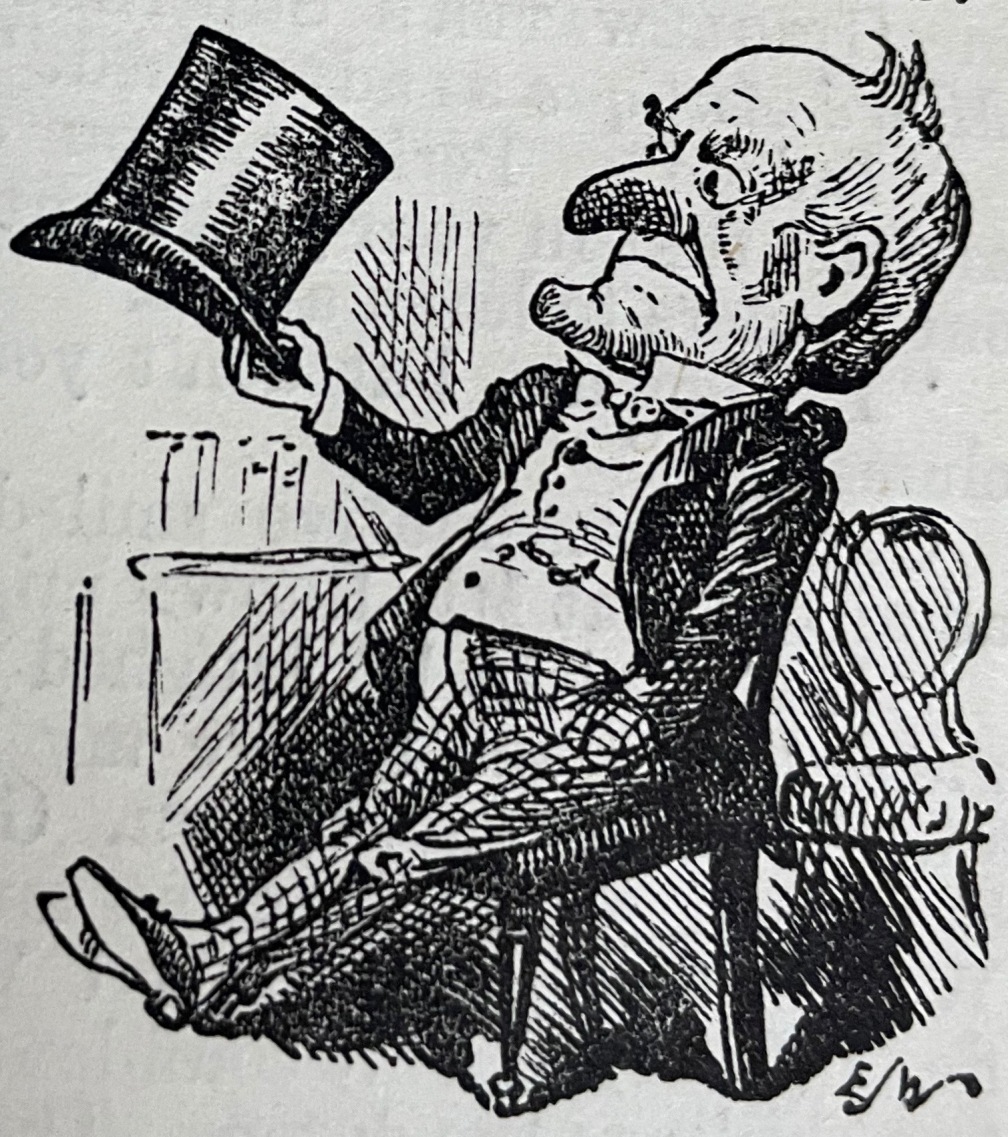


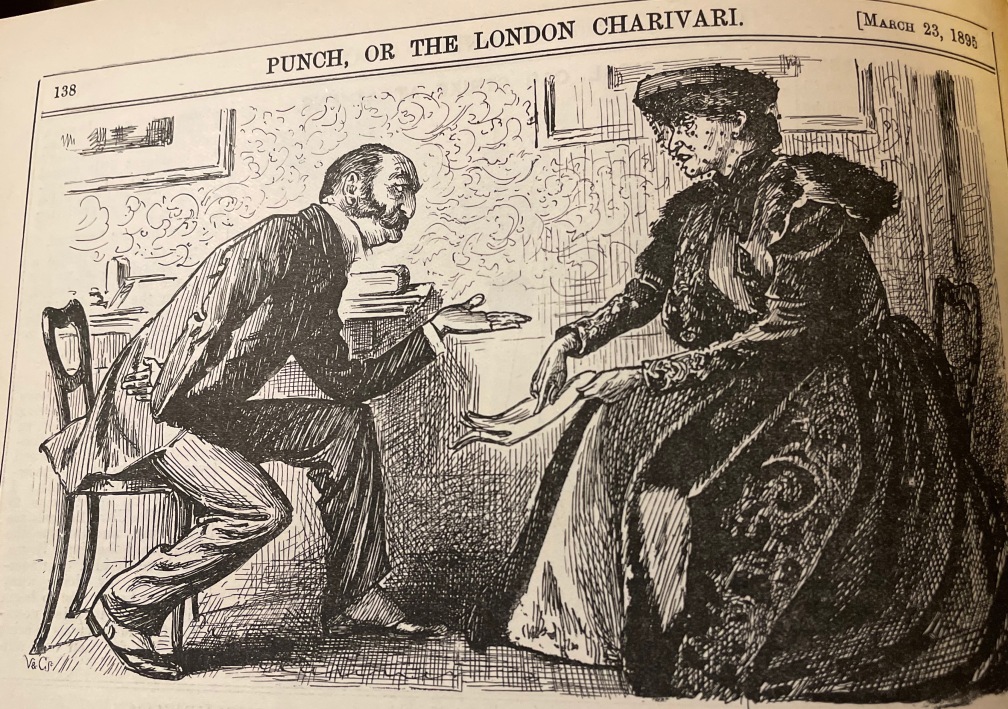
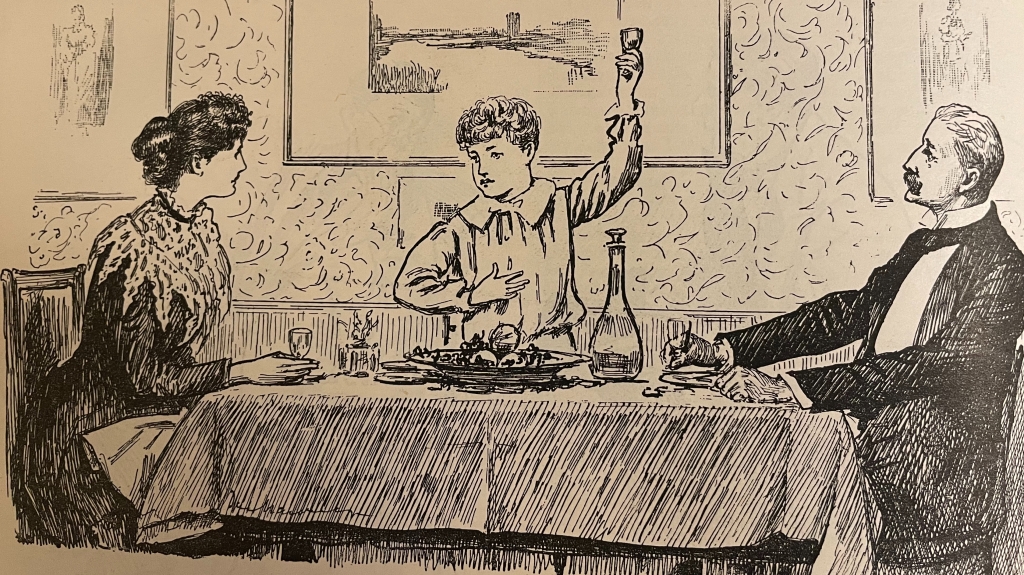

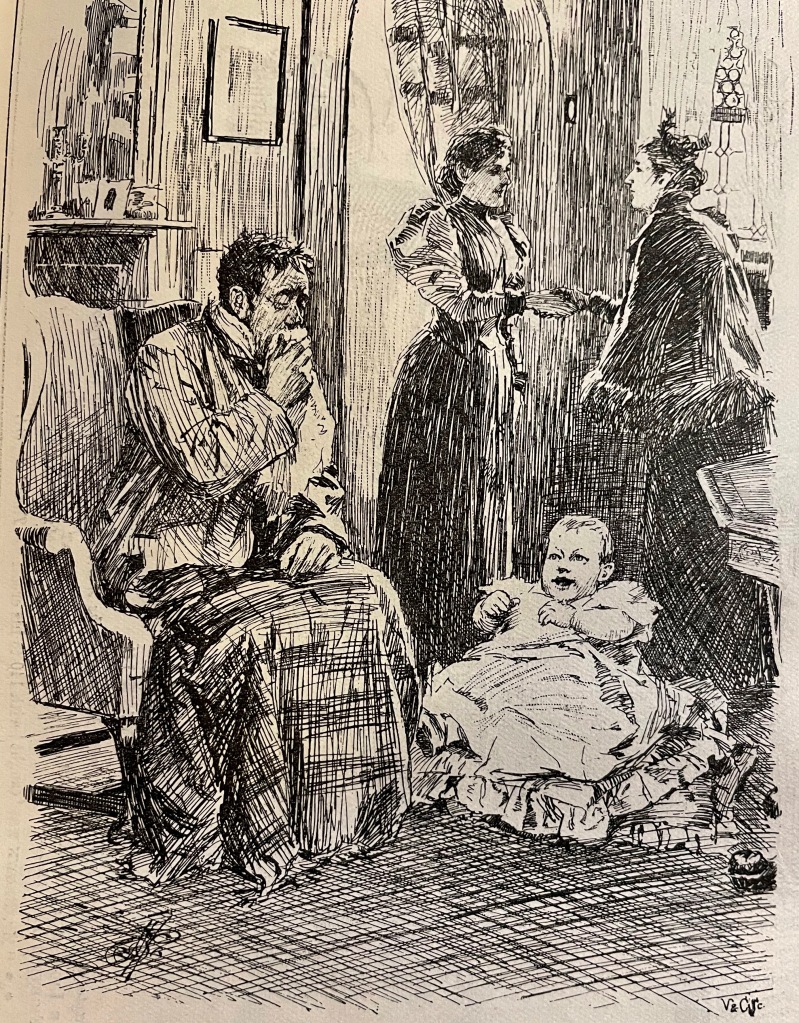

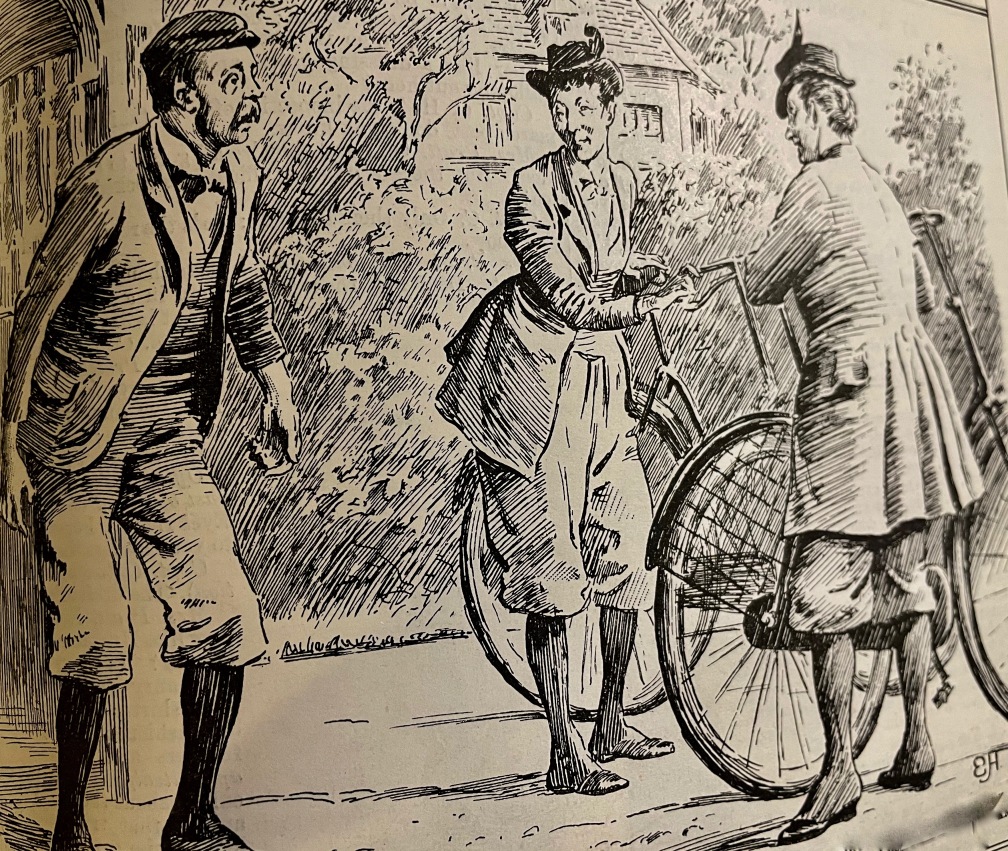



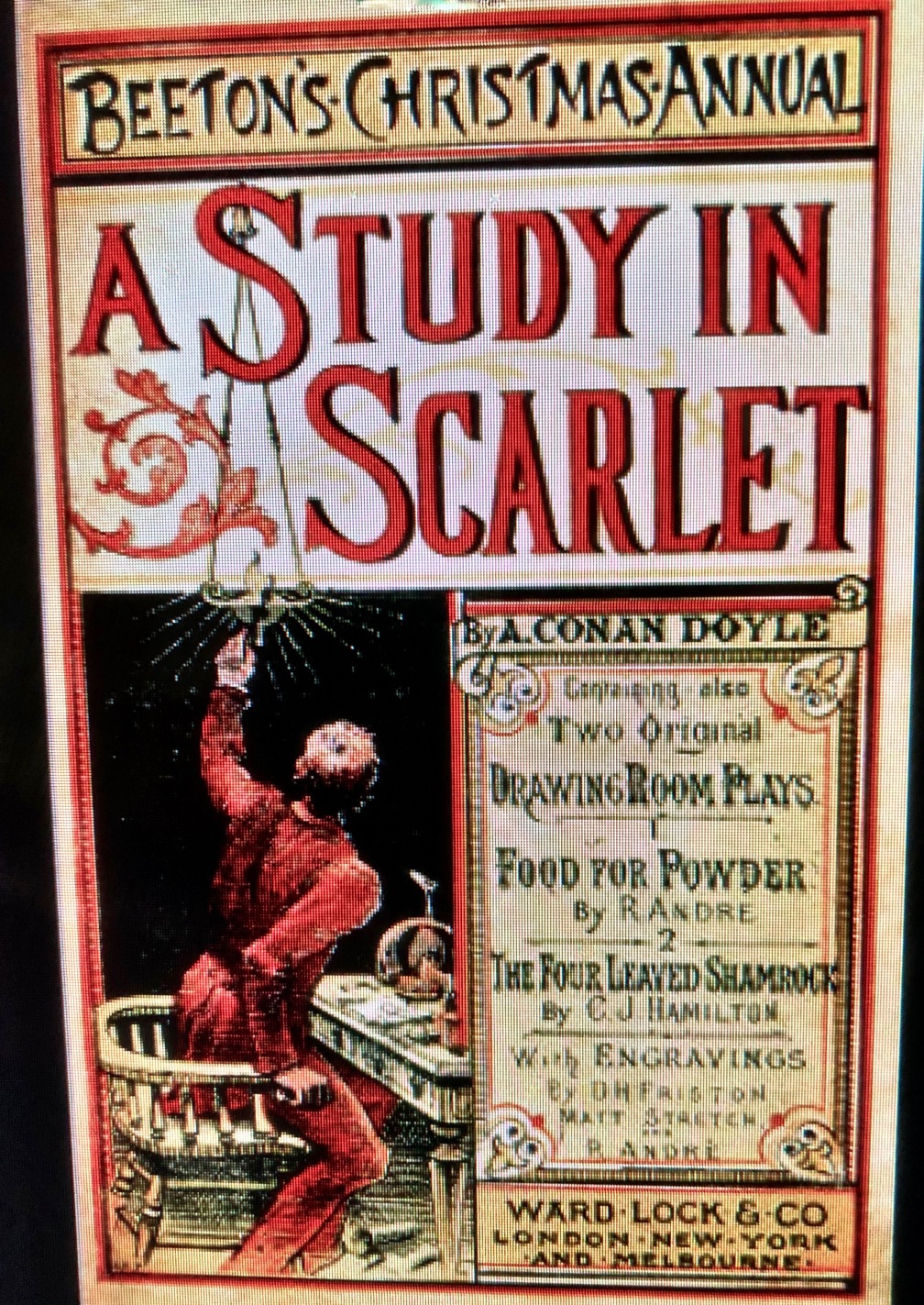
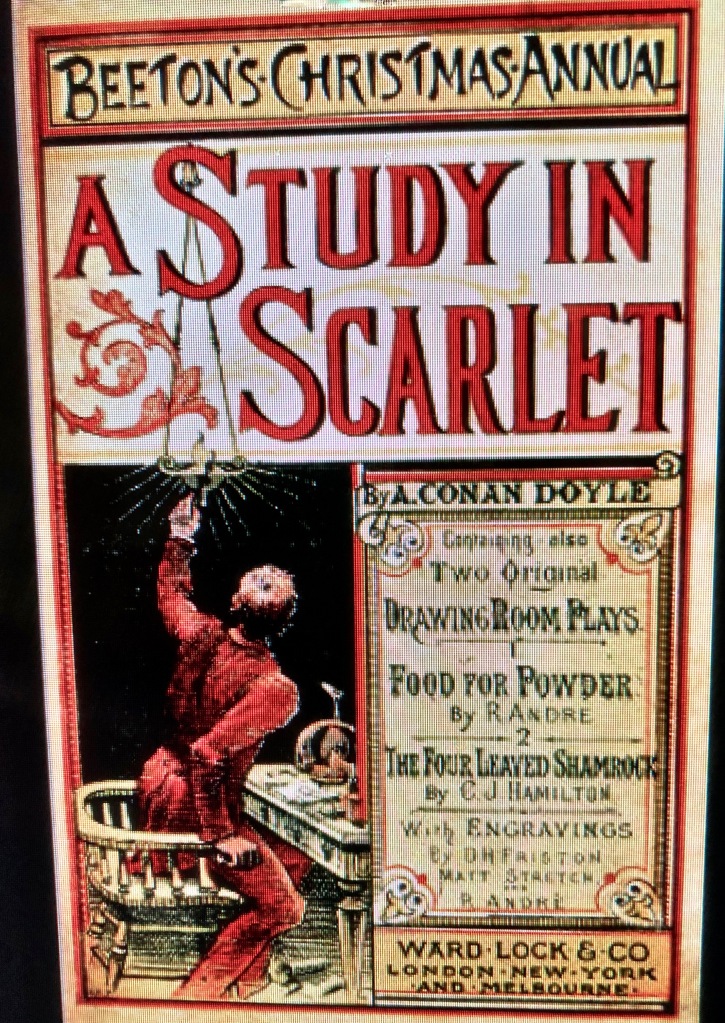


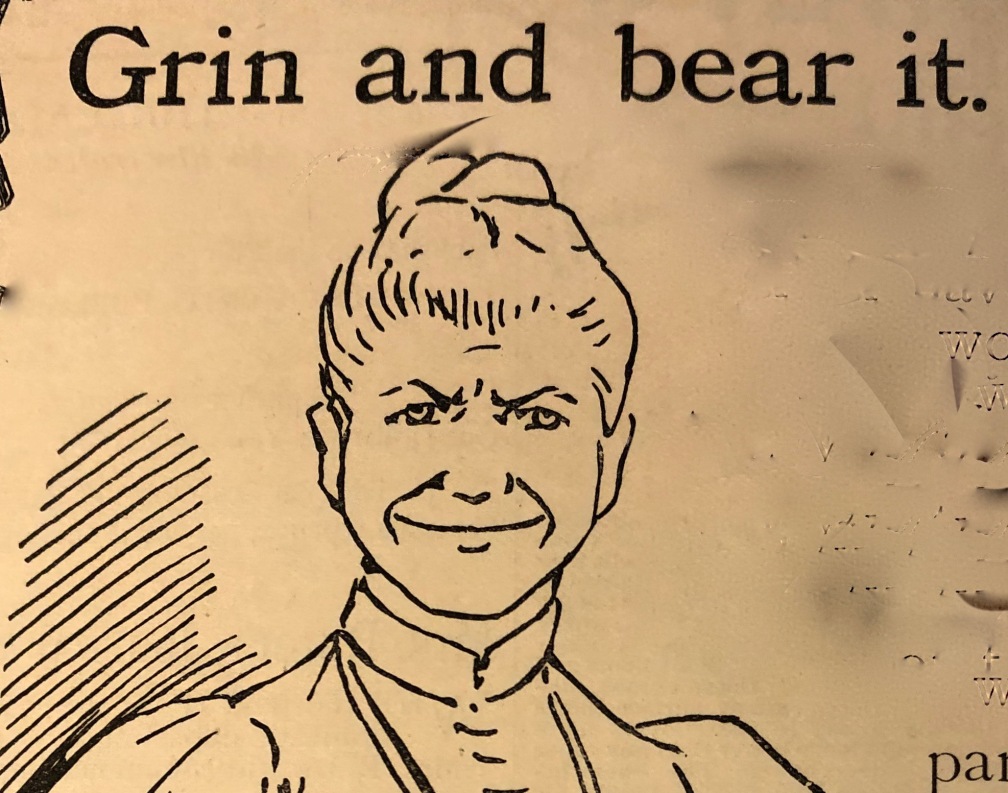
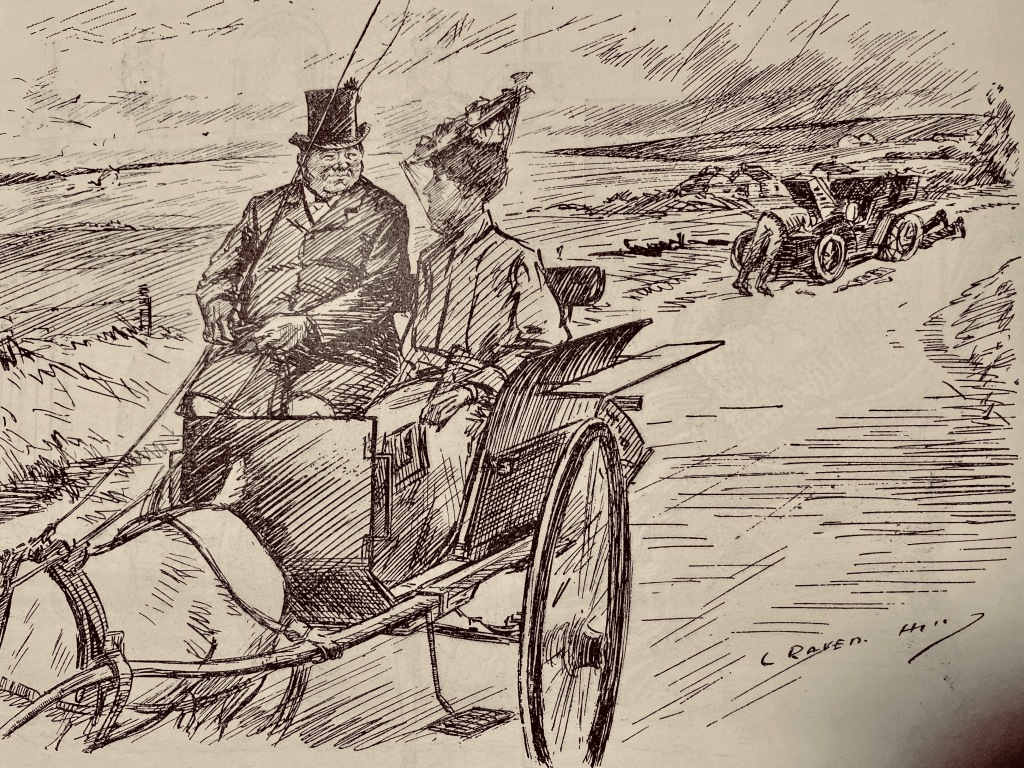
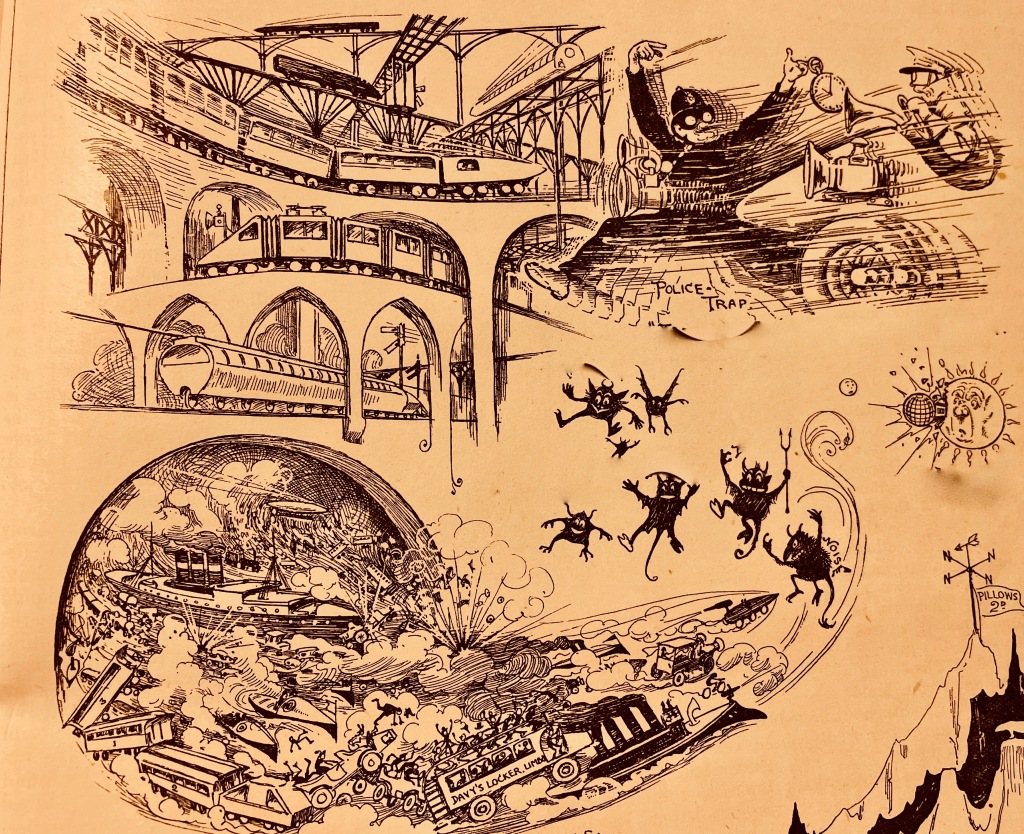
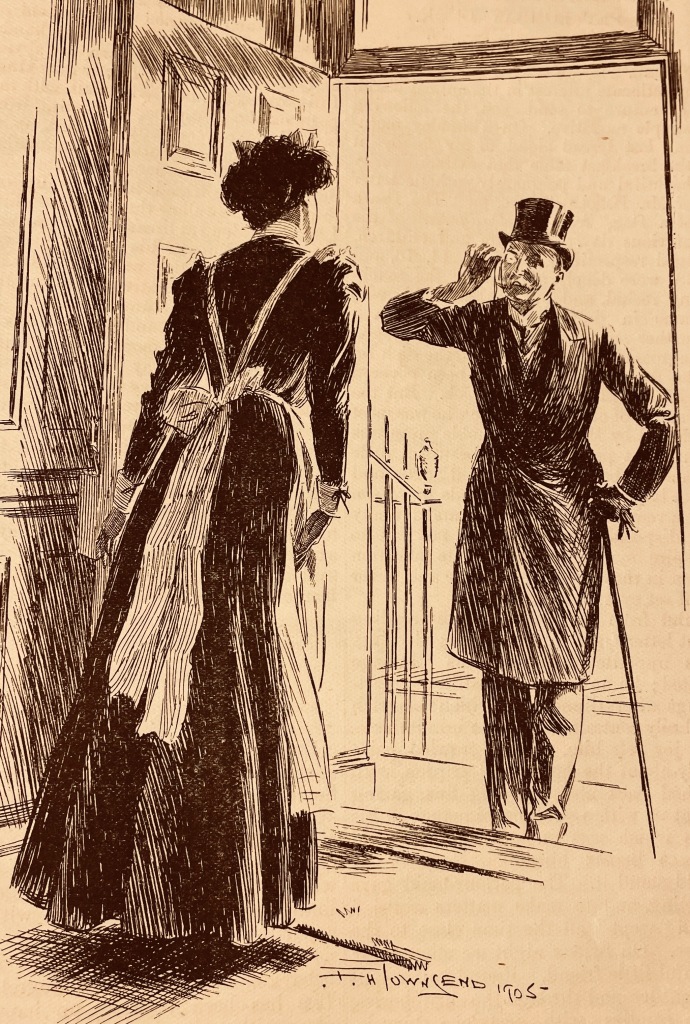
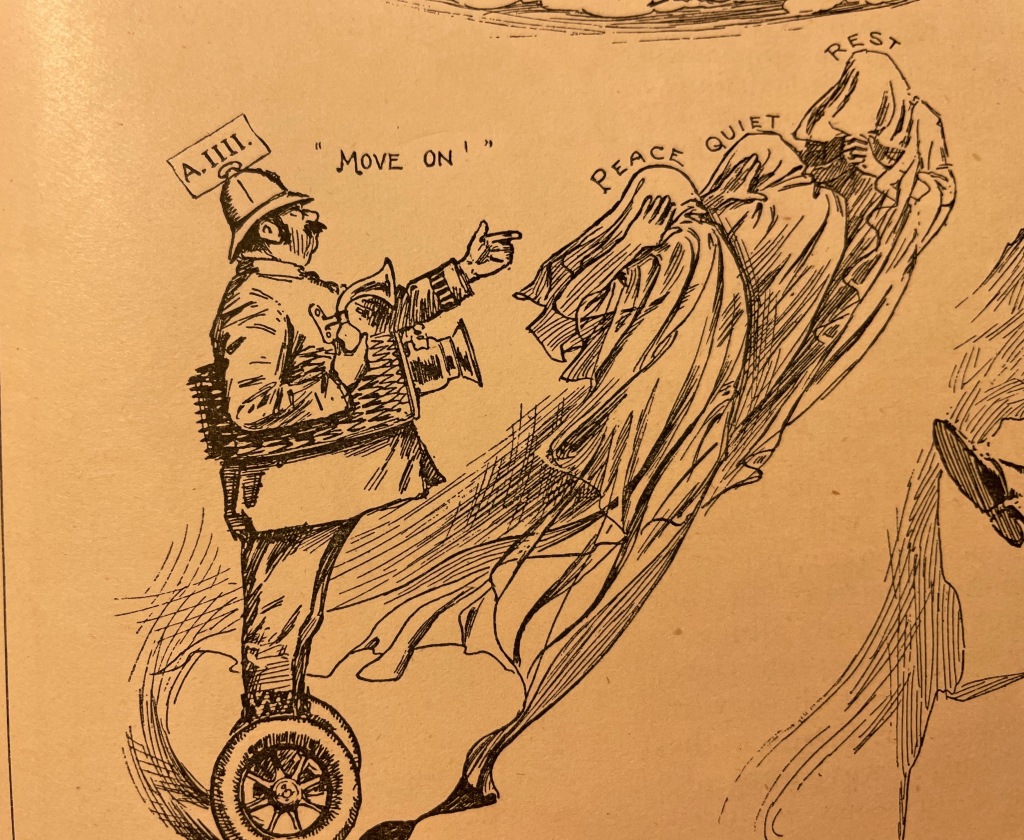


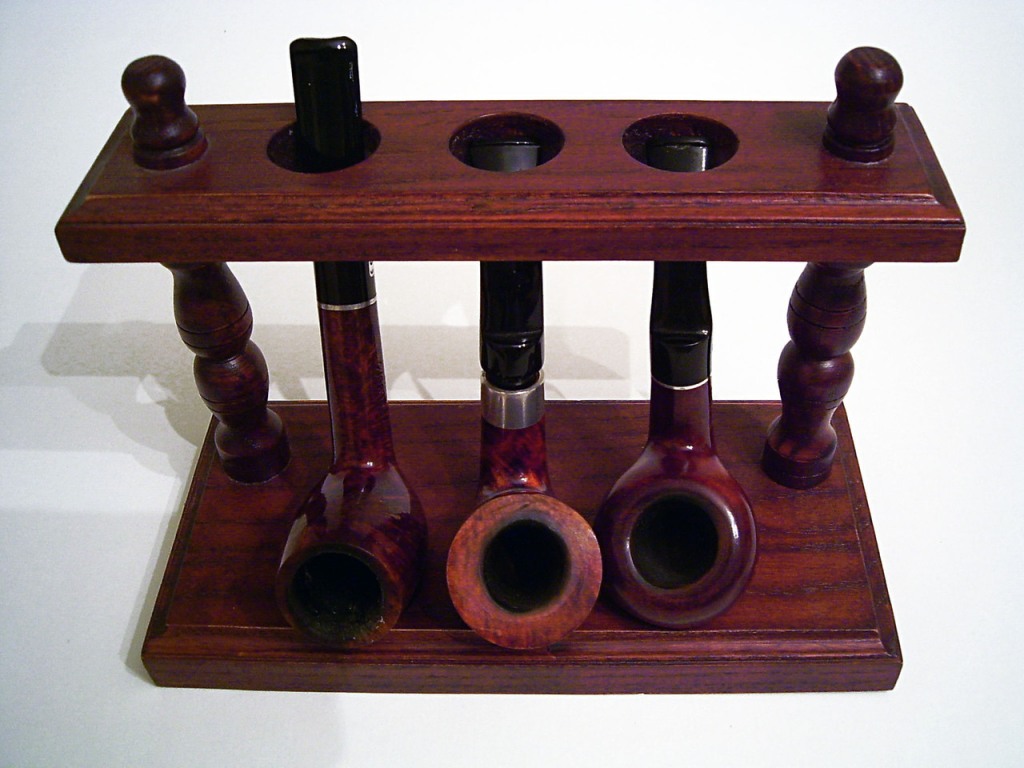






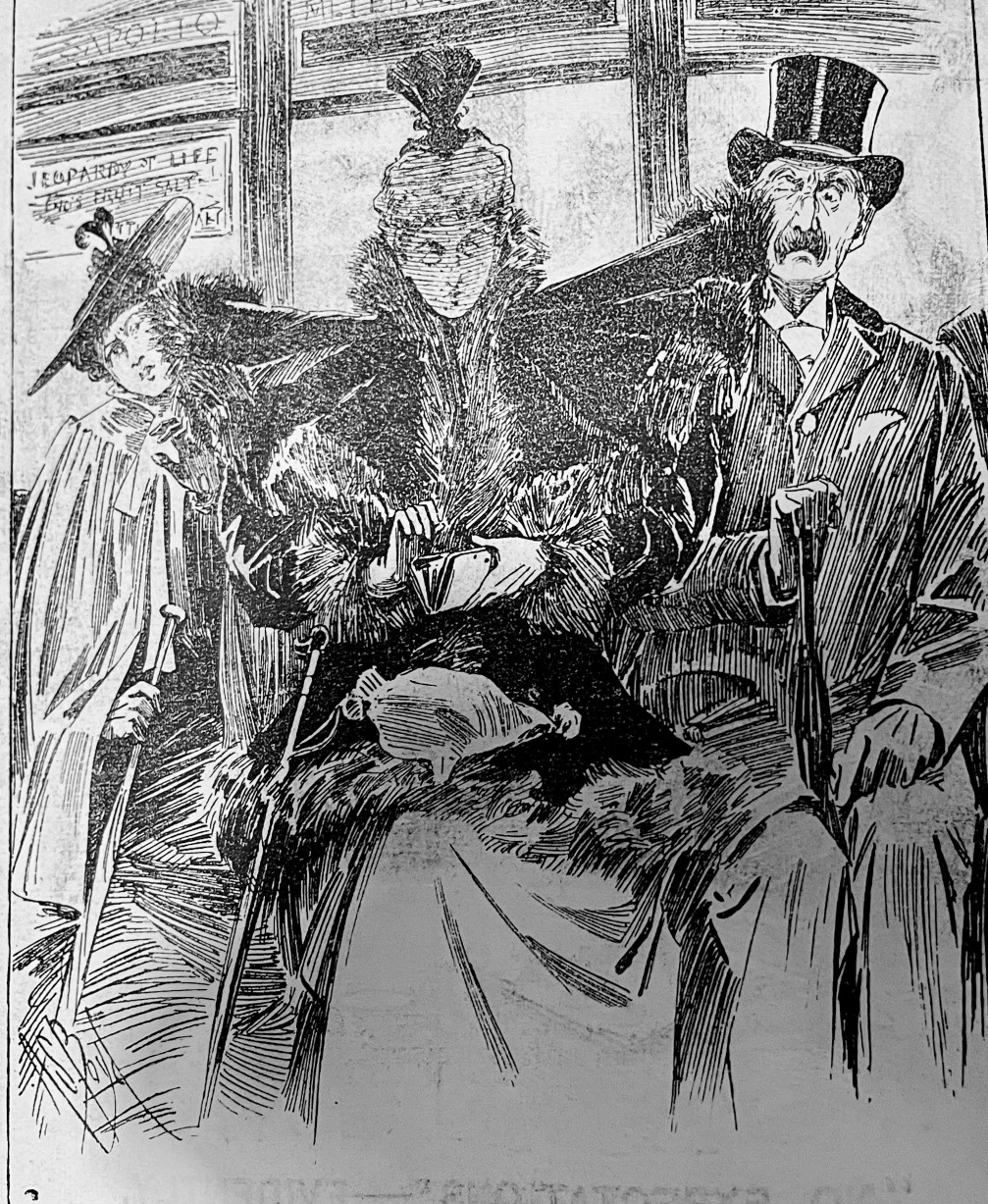

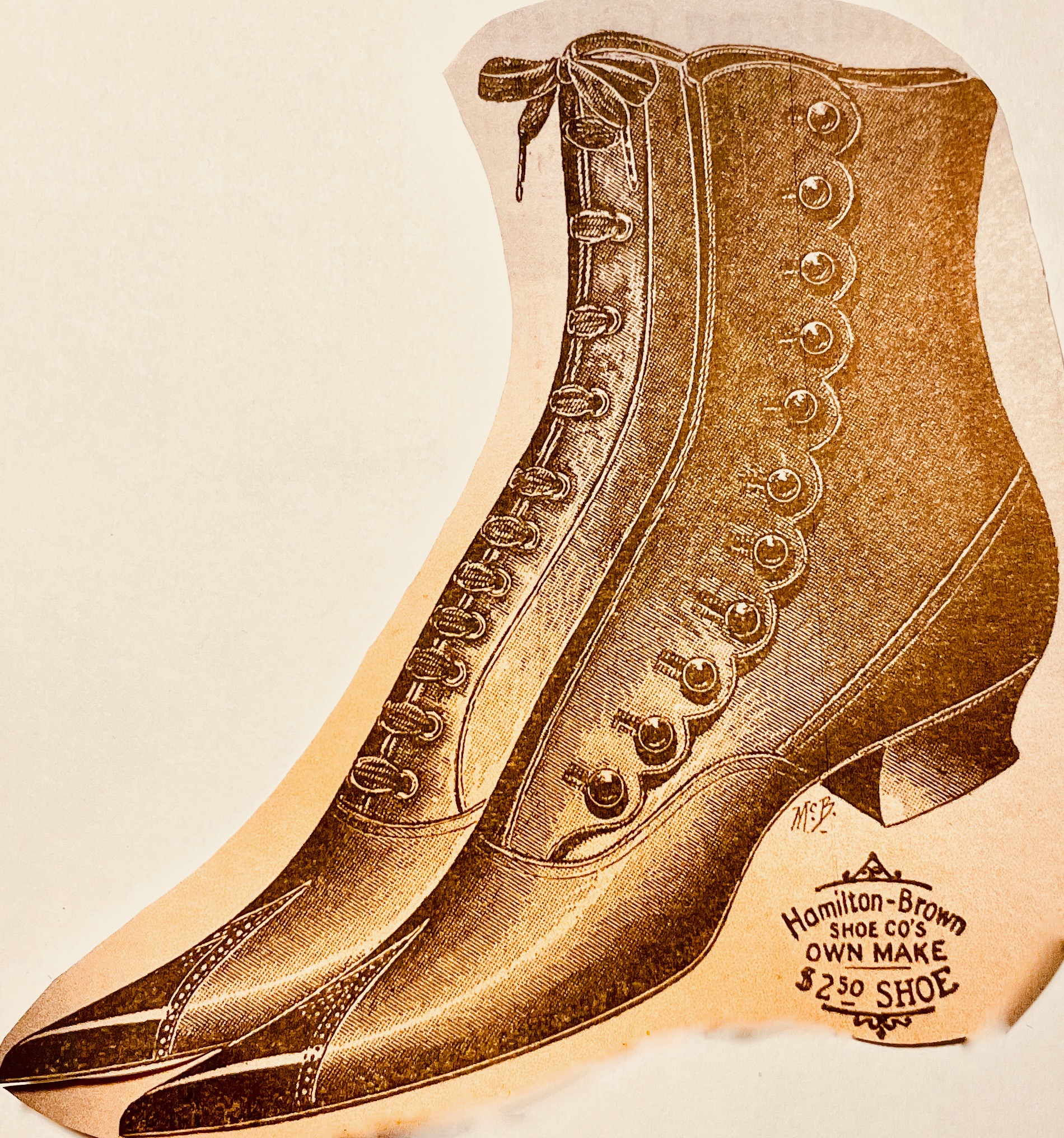

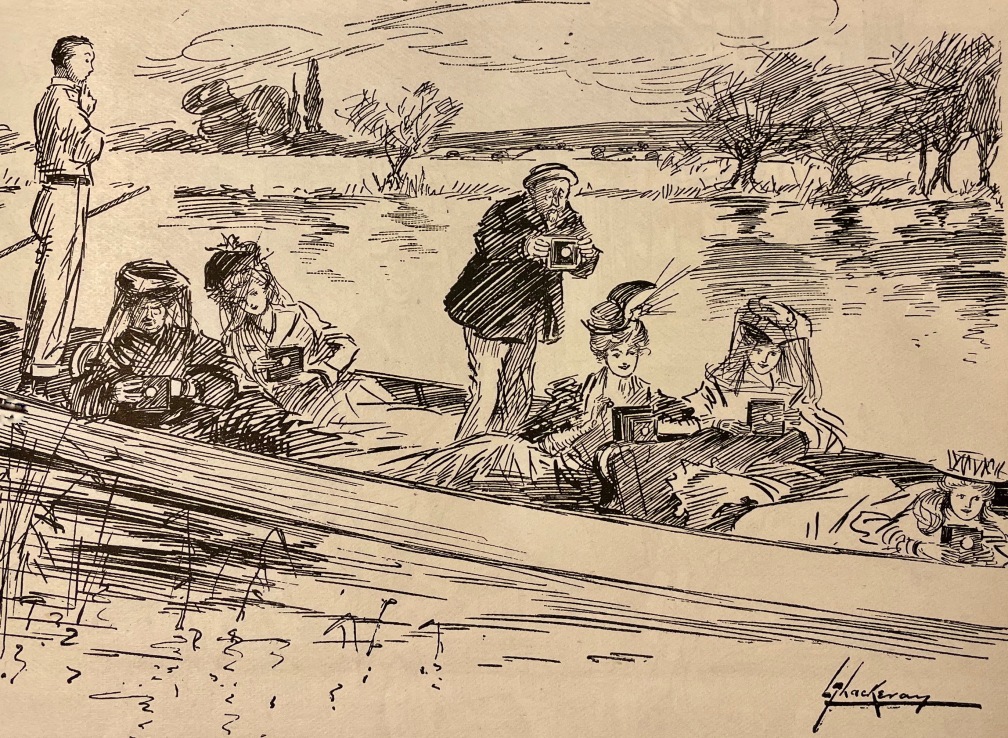
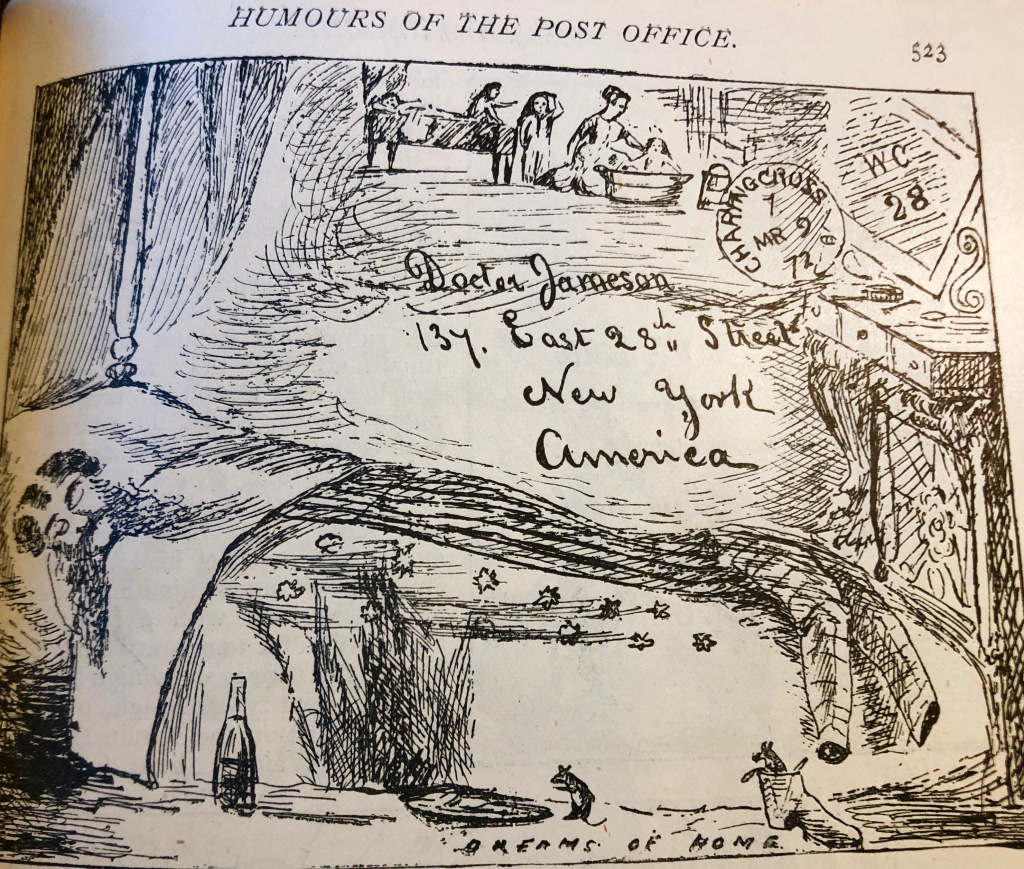
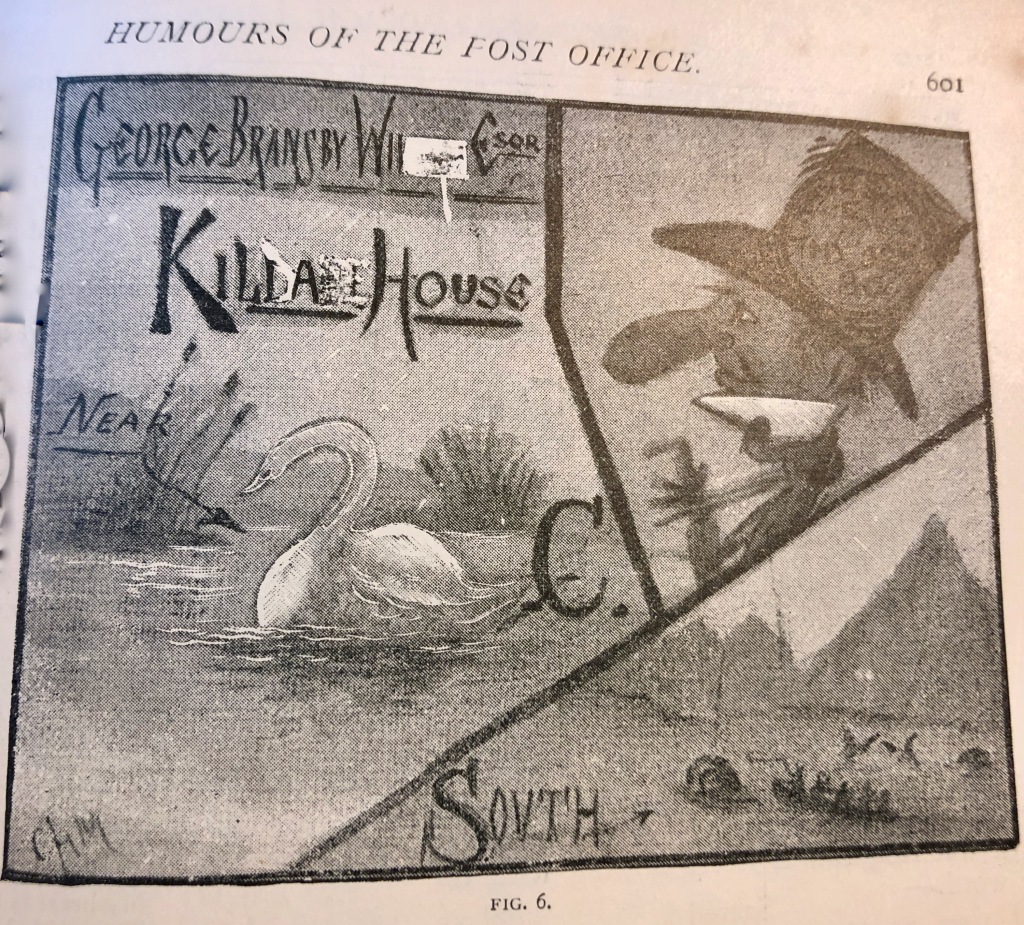
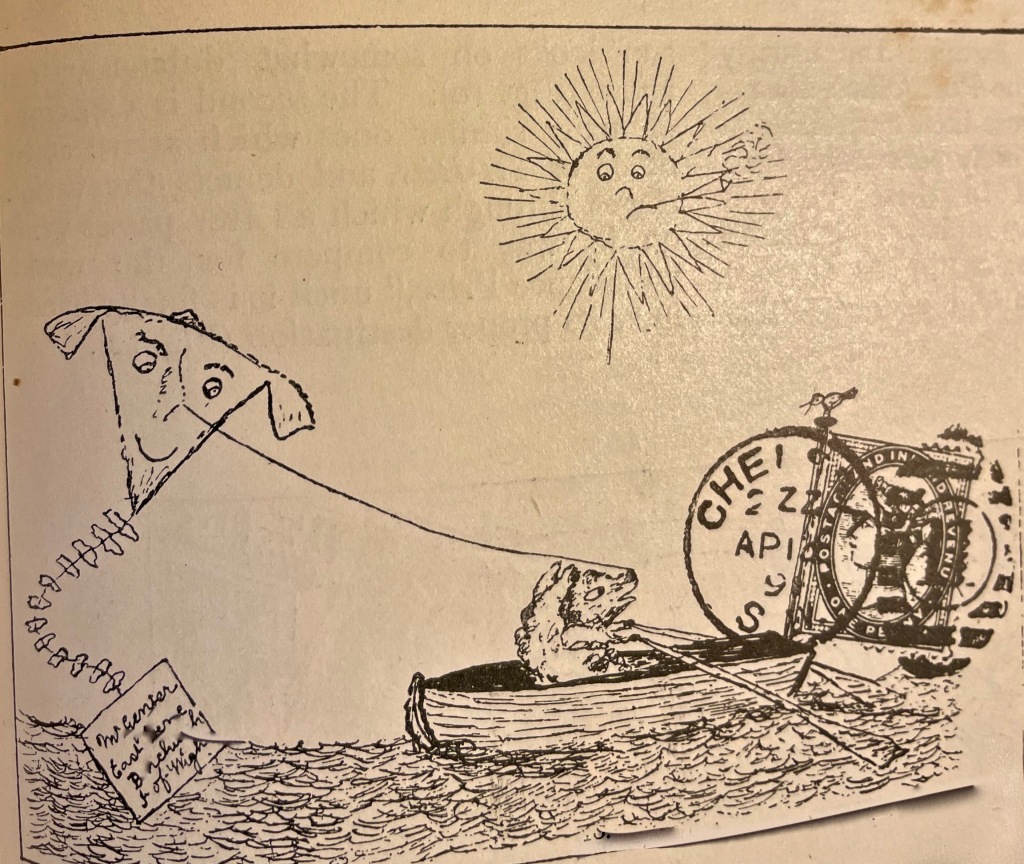
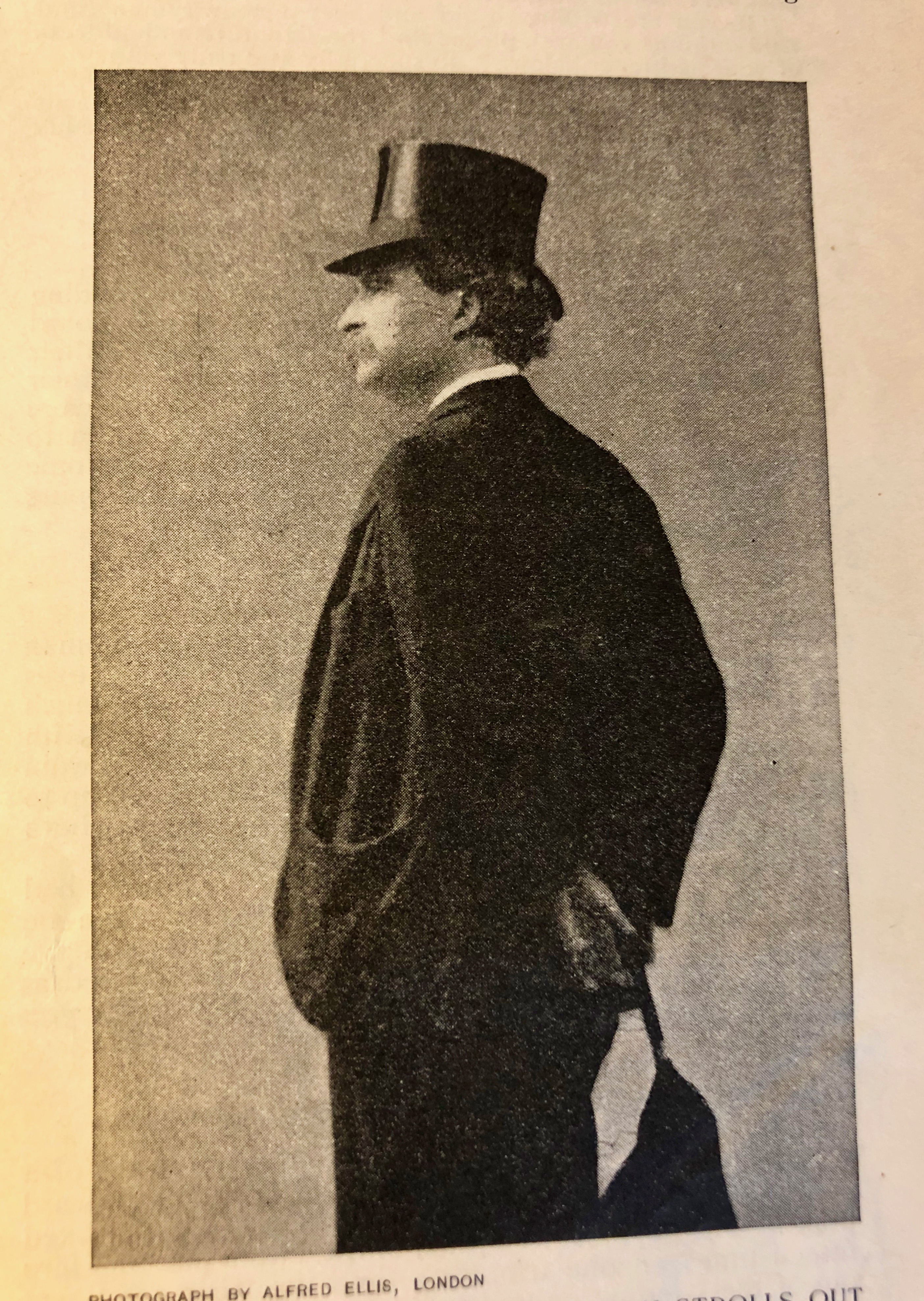
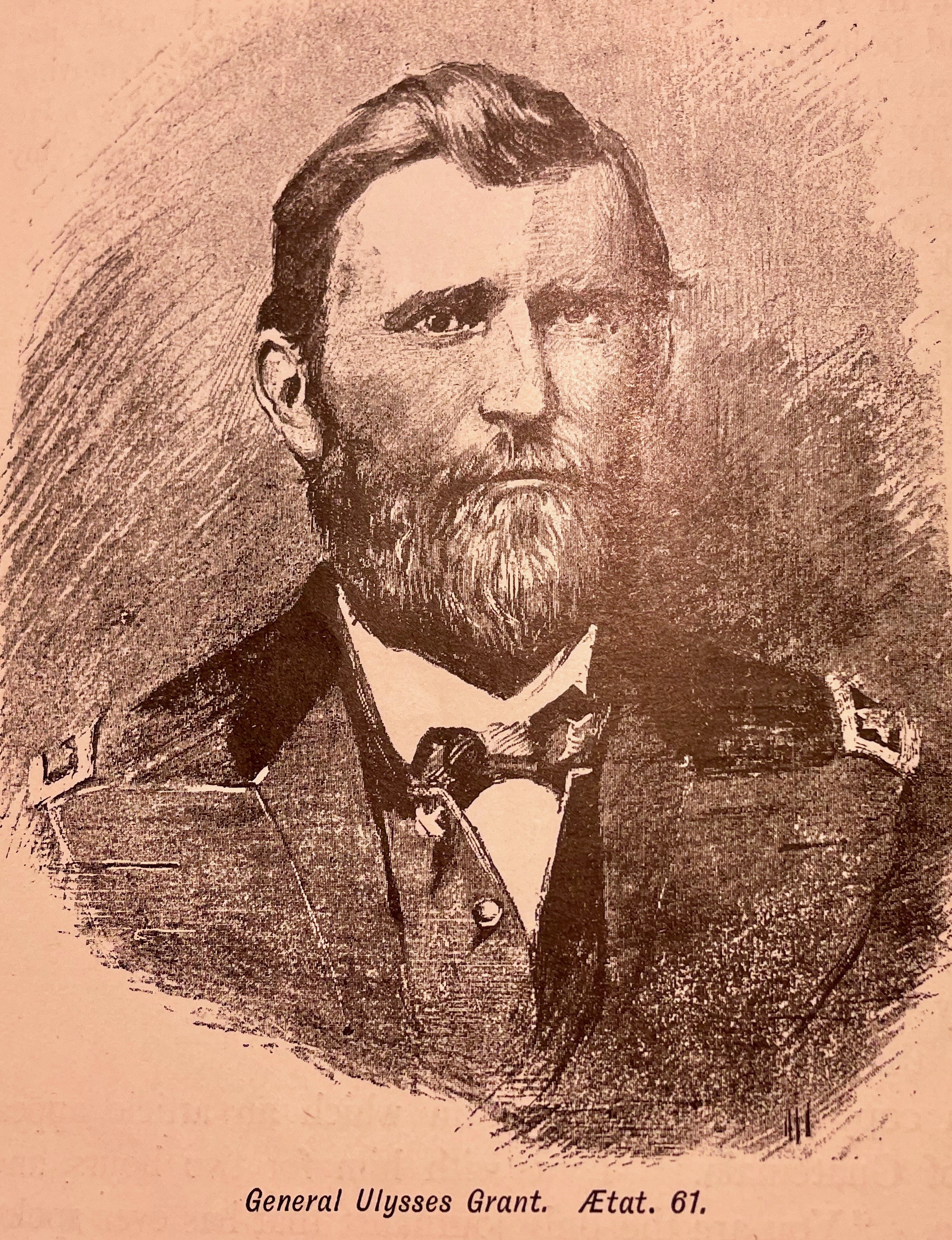
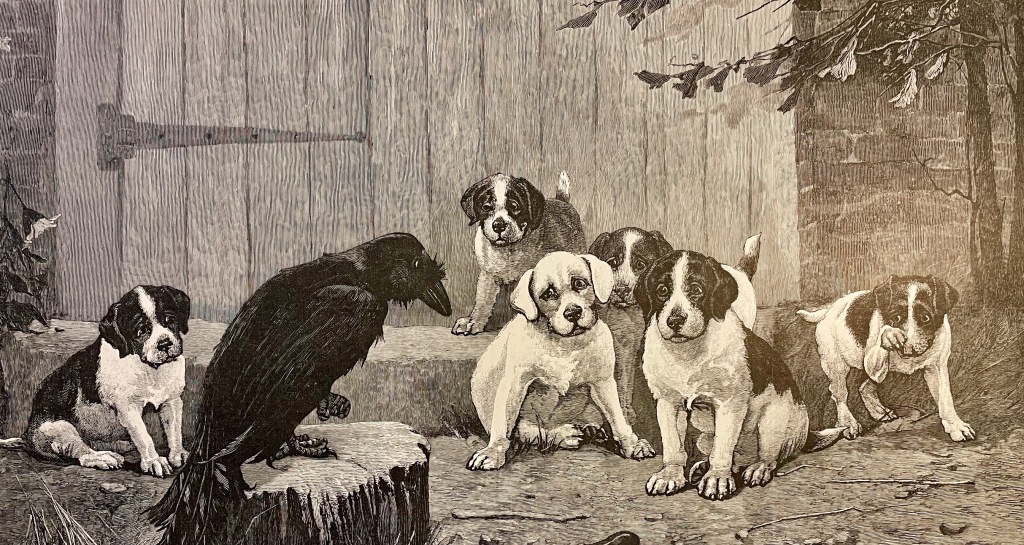
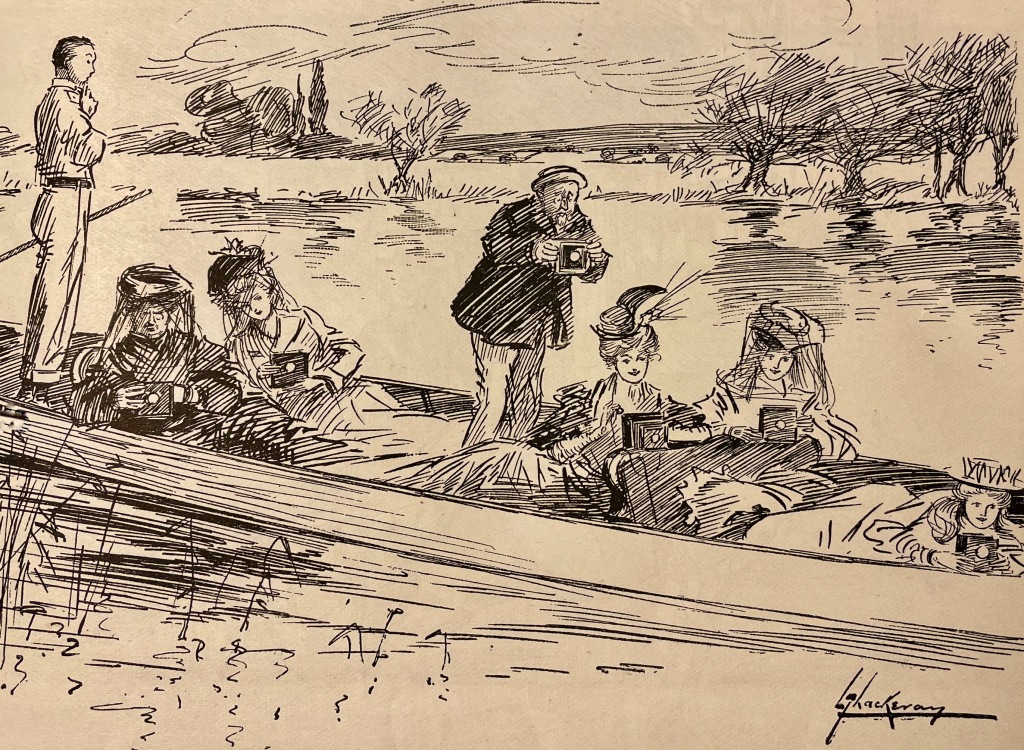
COMING SOON FROM PROPERTIUS PRESS:
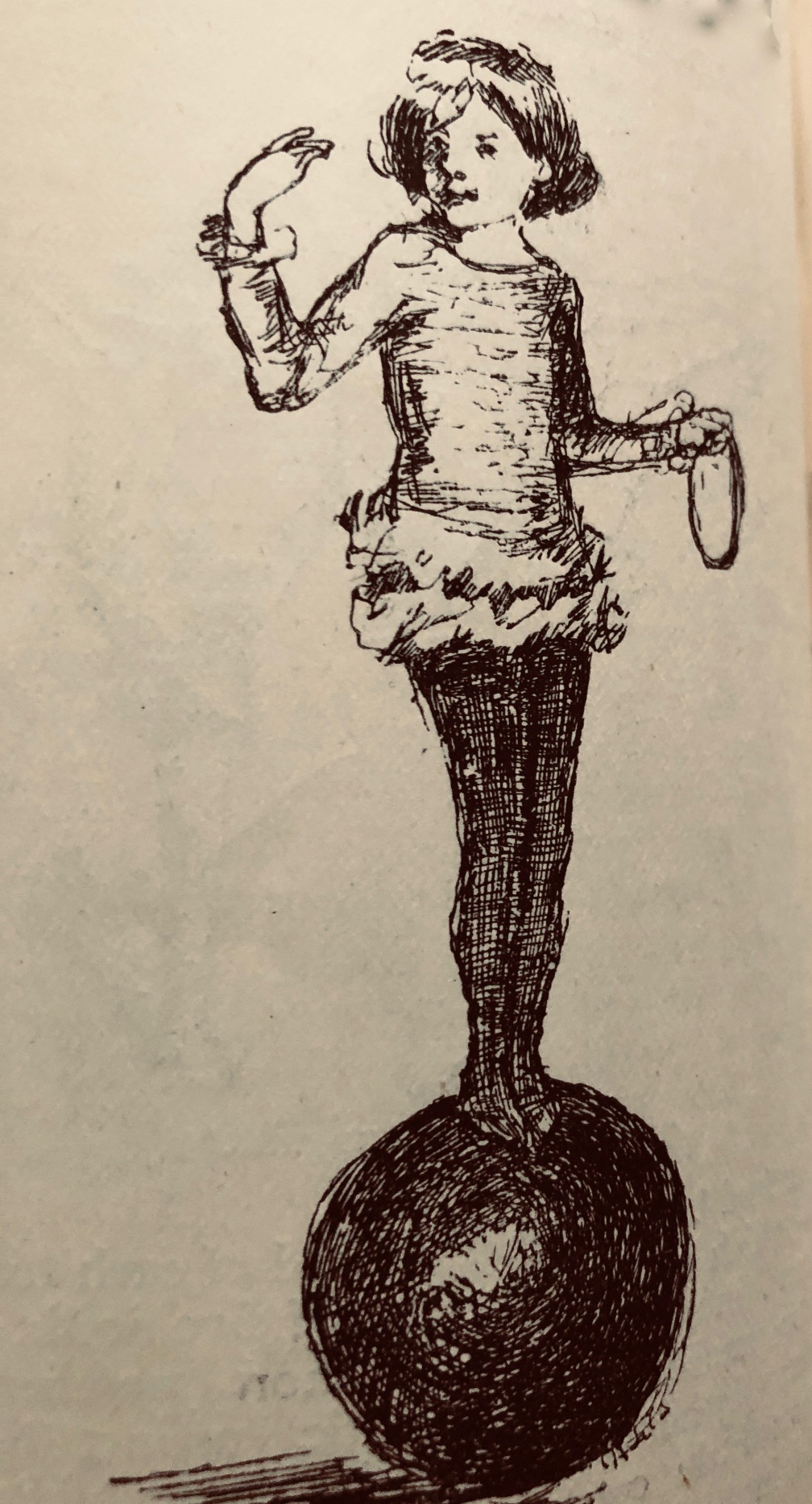


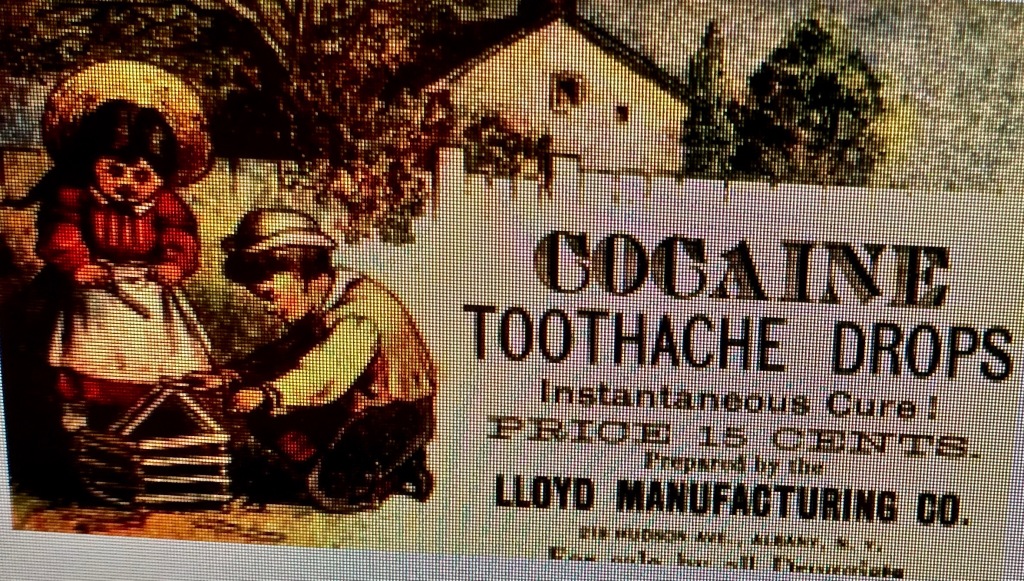
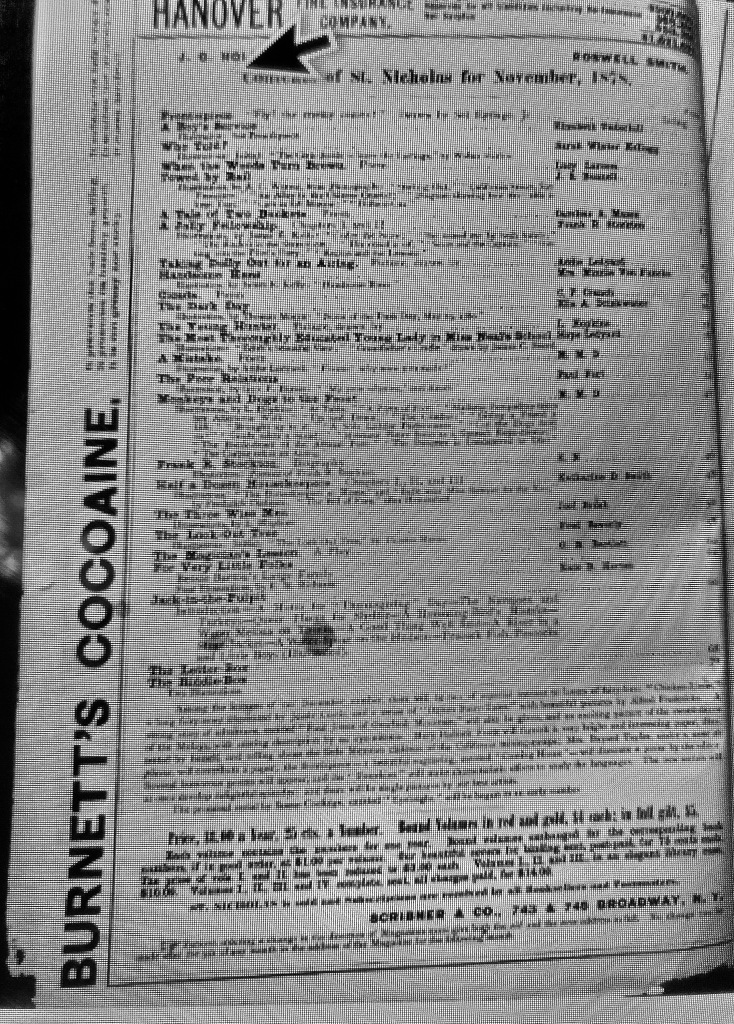


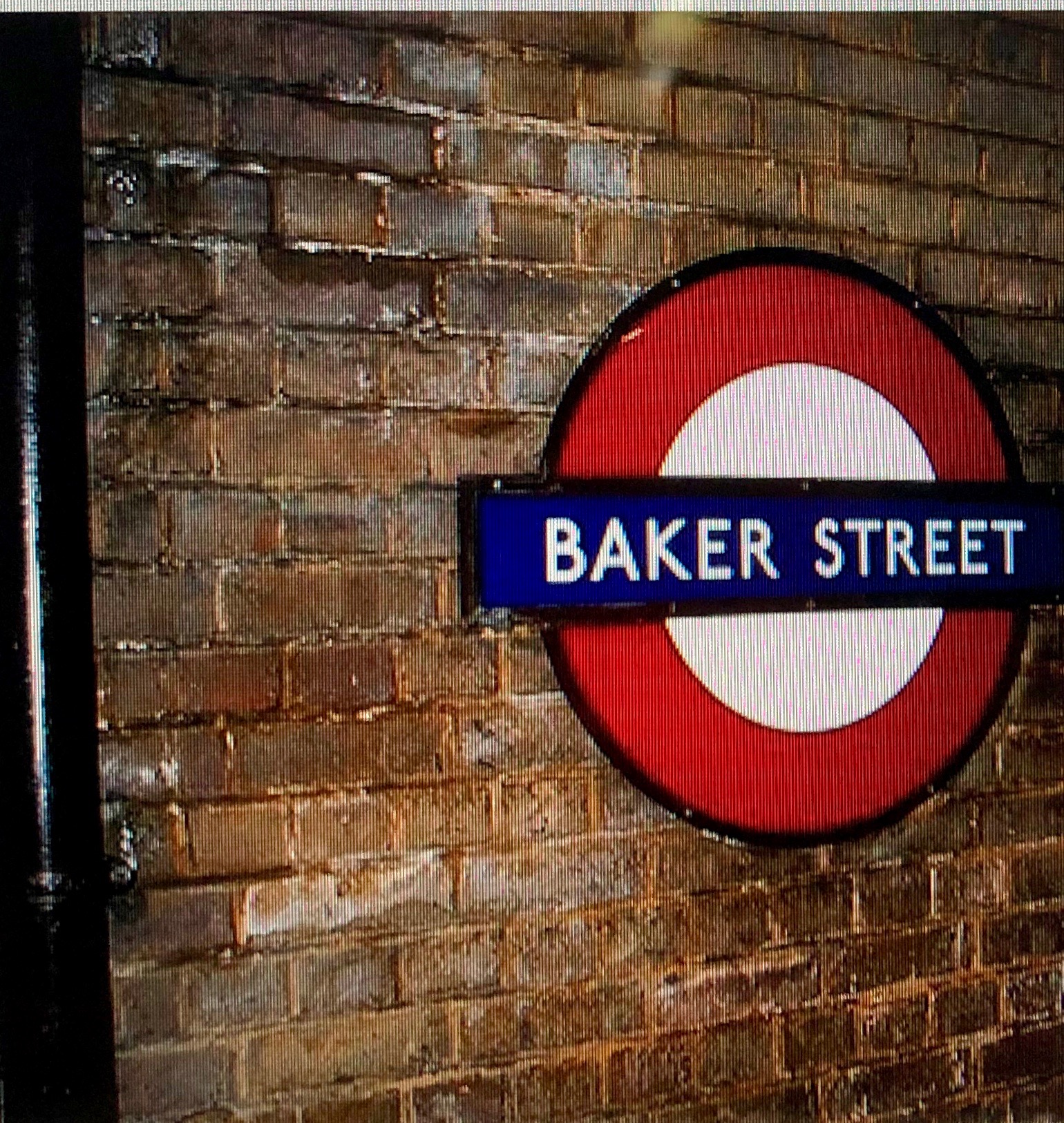

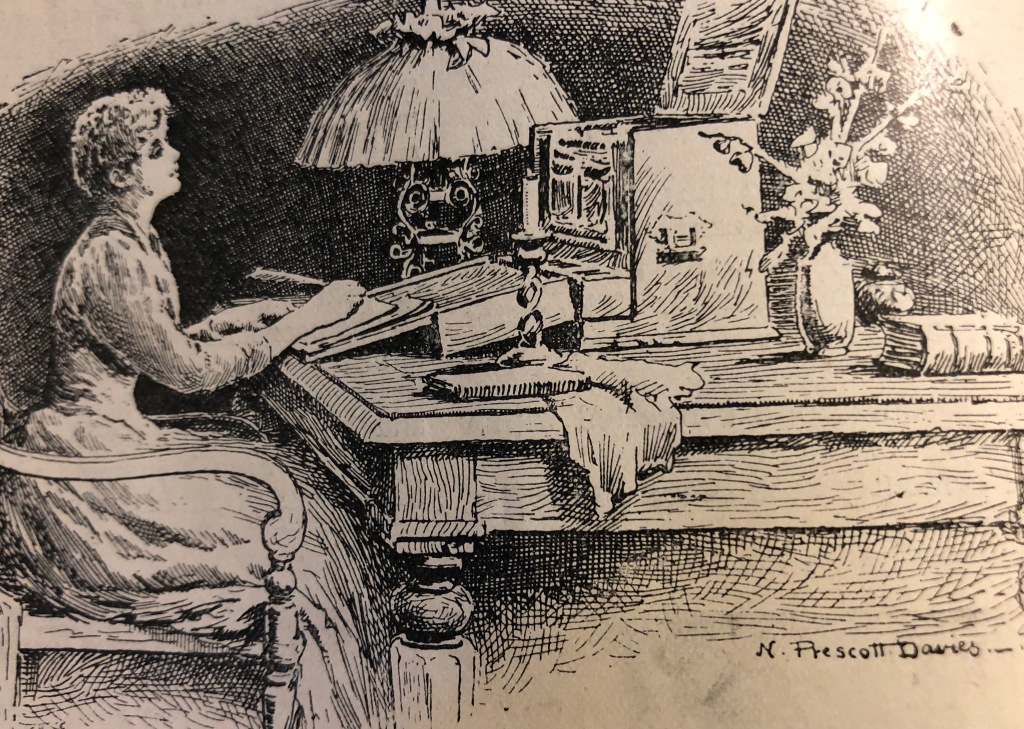




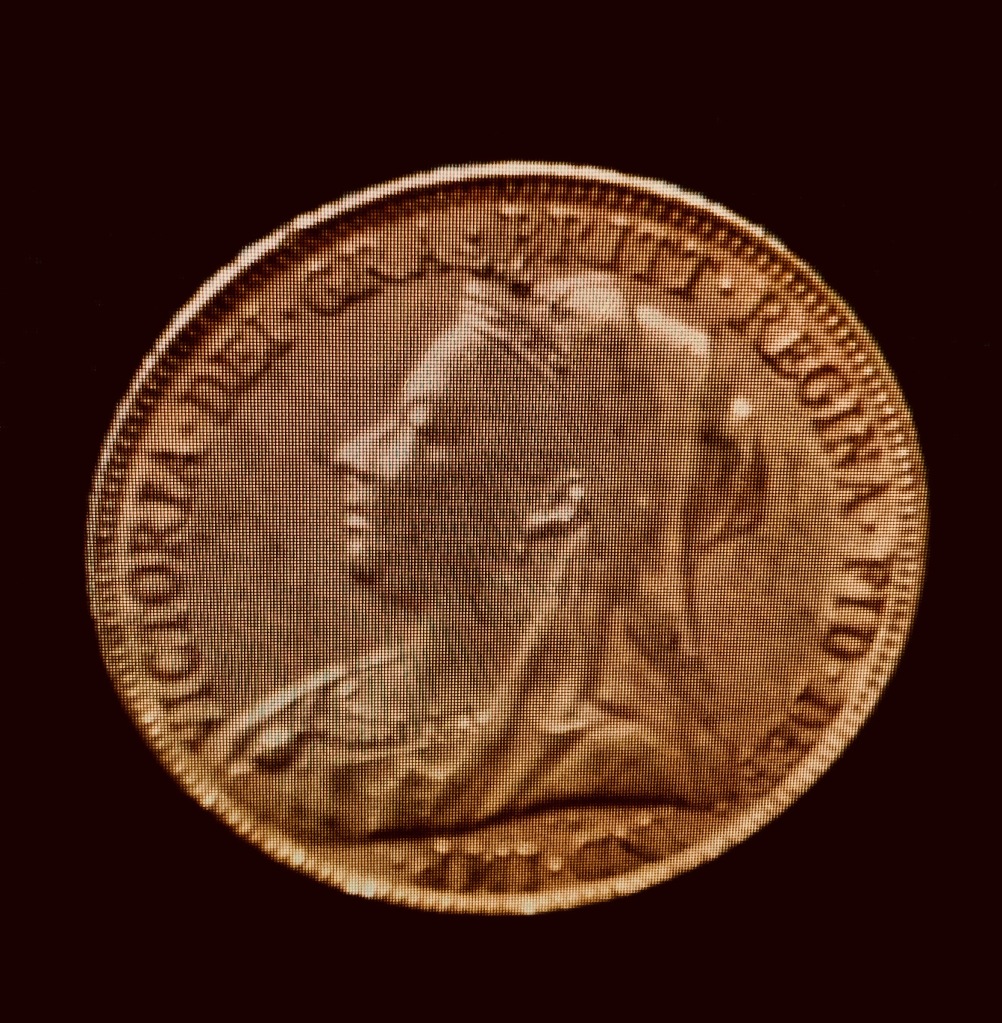
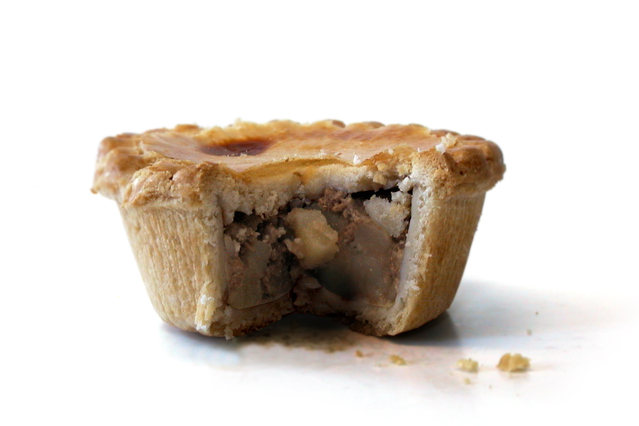
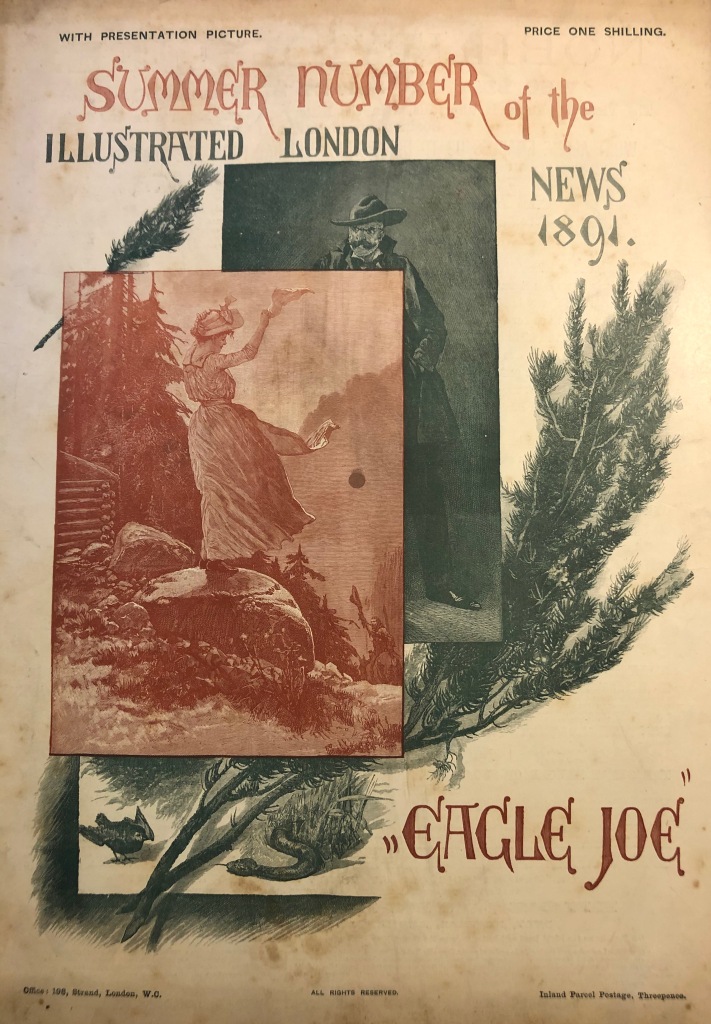


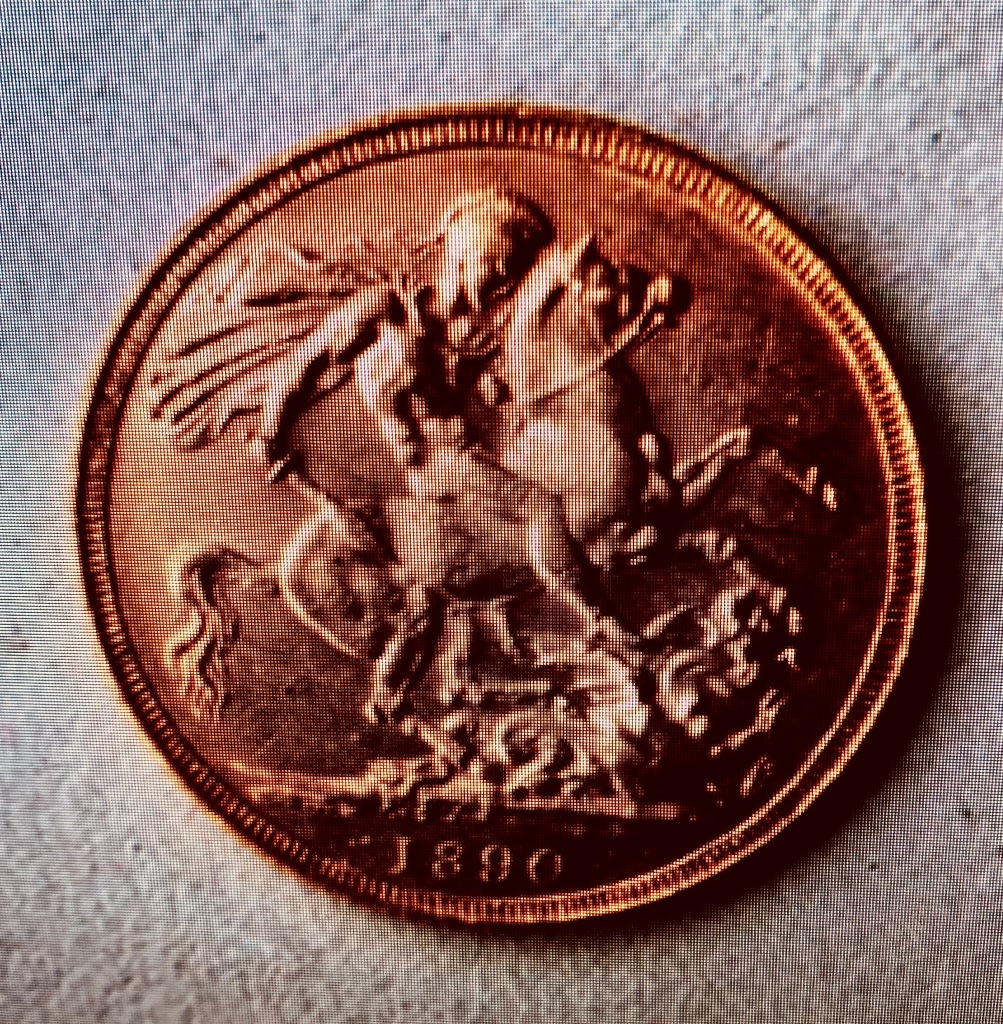
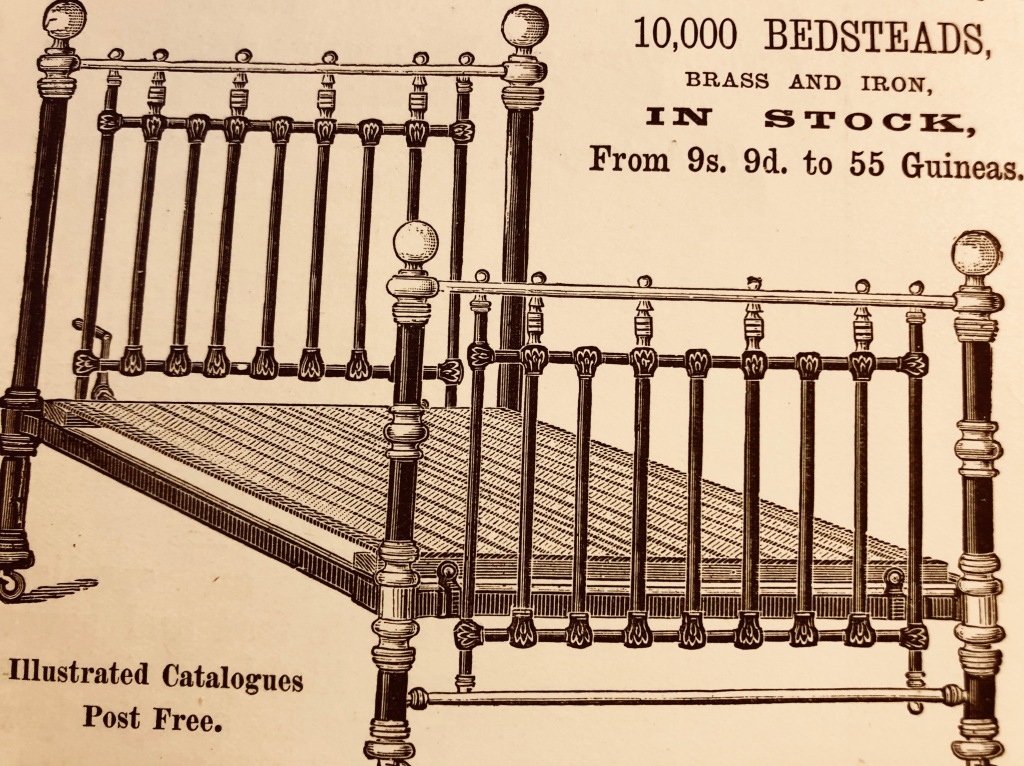
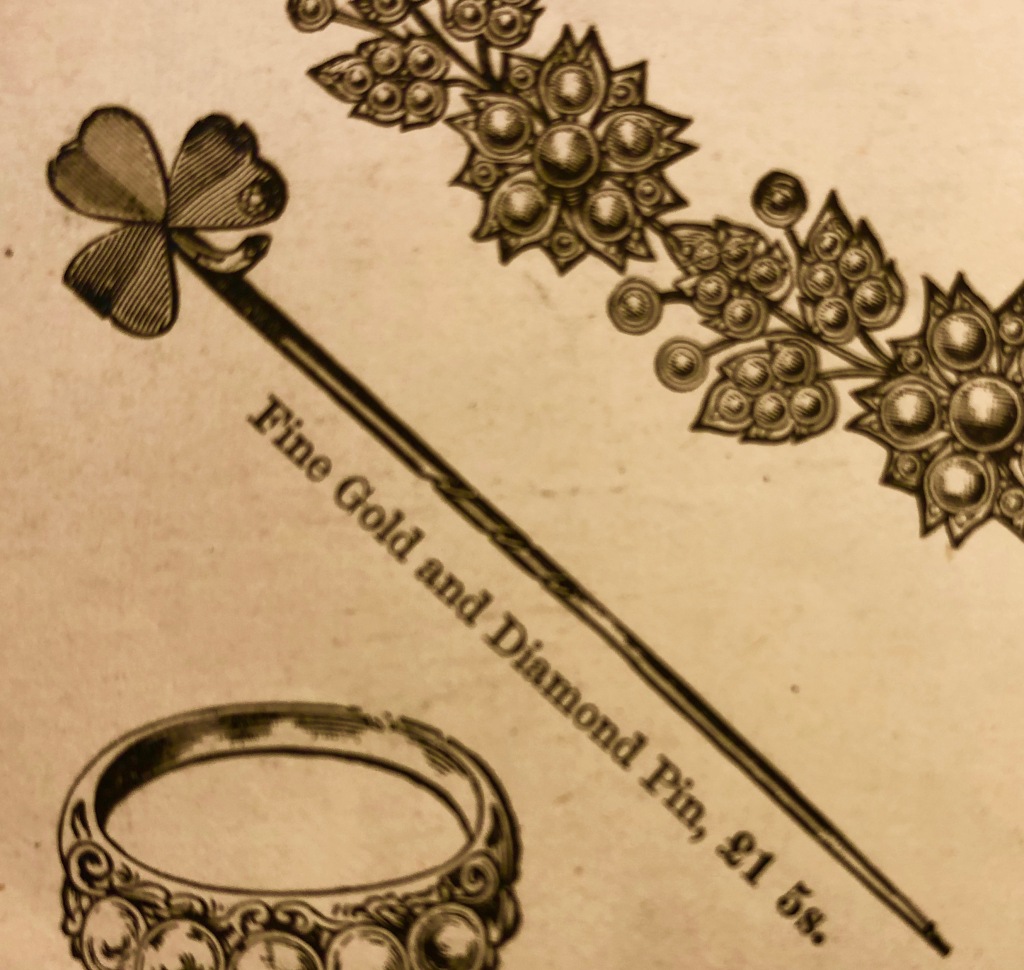
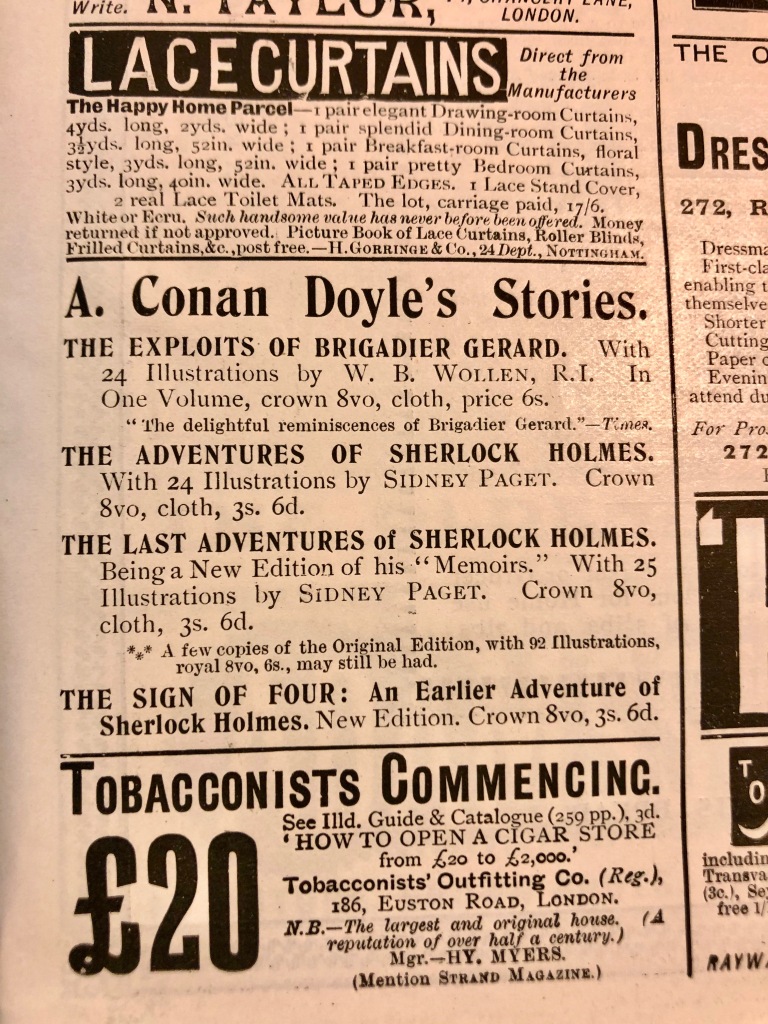
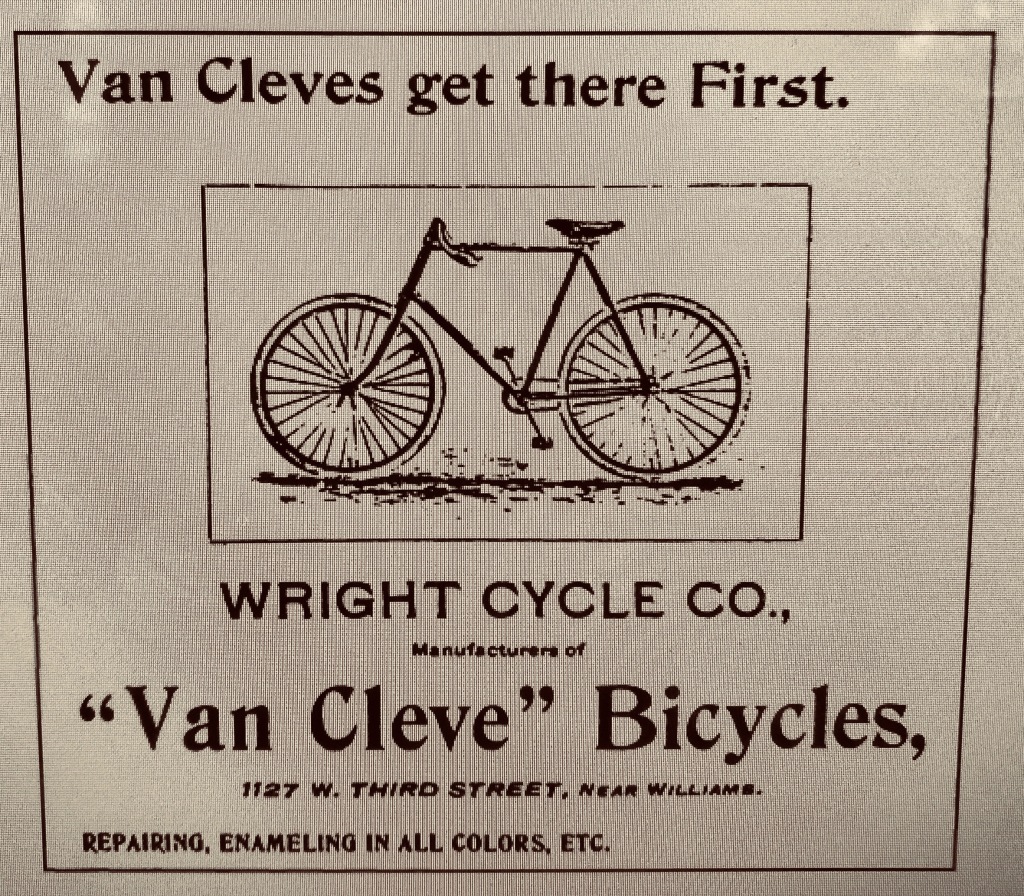
…https://www.dougbarnesauthor.com/2017/03/Wright-Brothers-Bicycle-Description-Options-Costs-1890s.html
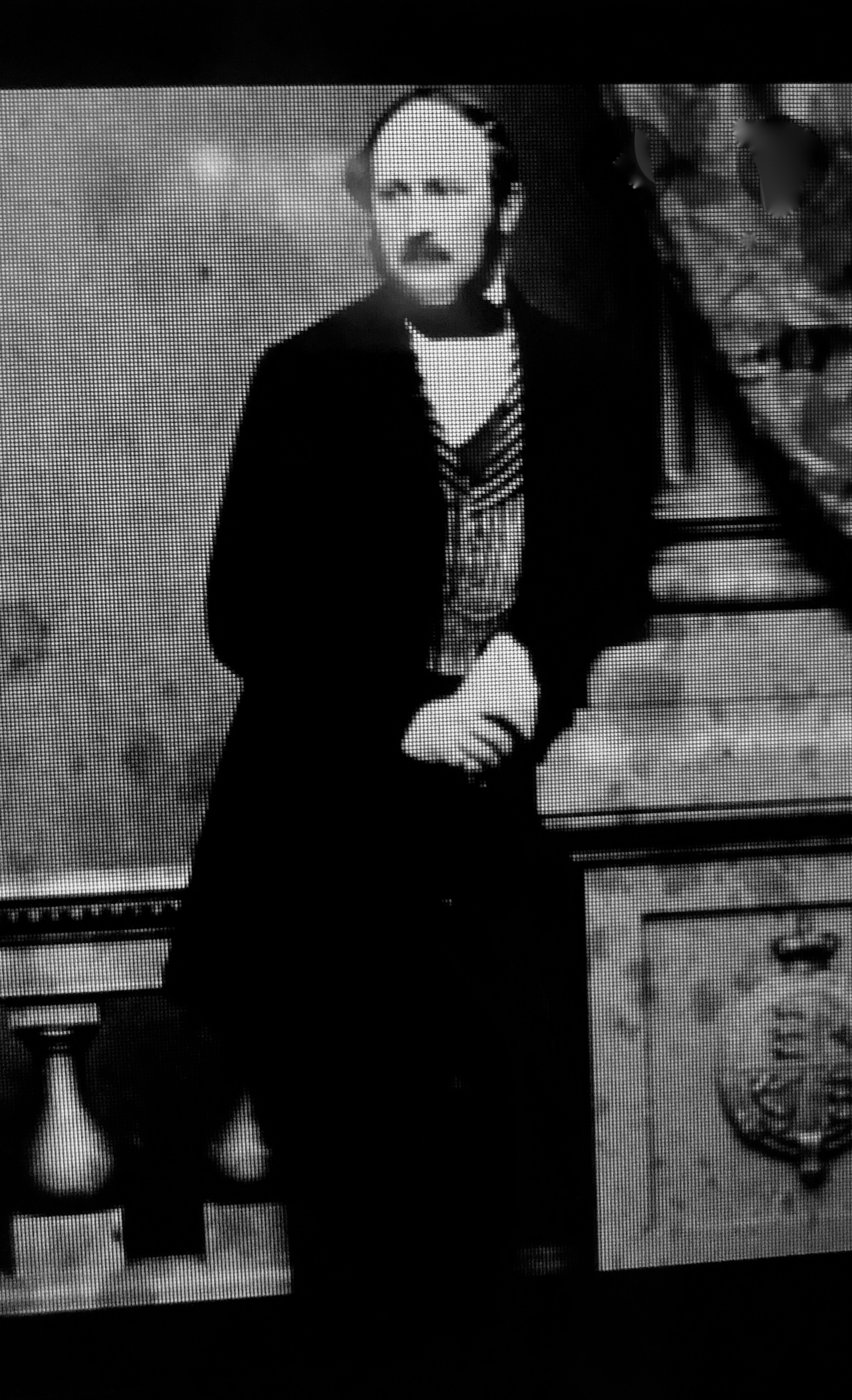

“After the Prince Consort’s death, Her Majesty had some of his hair made into a bracelet.* Now the Queen stipulated that there were to be no joinings, but this was impossible, the Prince’s hair being too short. However the Queen’s instructions were carried out and the bracelet delivered.
Chancing to be toying with it one day, Her Majesty drew out a hair three times the length of the Prince’s hair; then there was trouble. The bracelet was inspected, and it was found that that while much of it was Prince Albert’s hair, the greater part of it was not.” (The bracelet pictured is such a bracelet, but not that bracelet.)

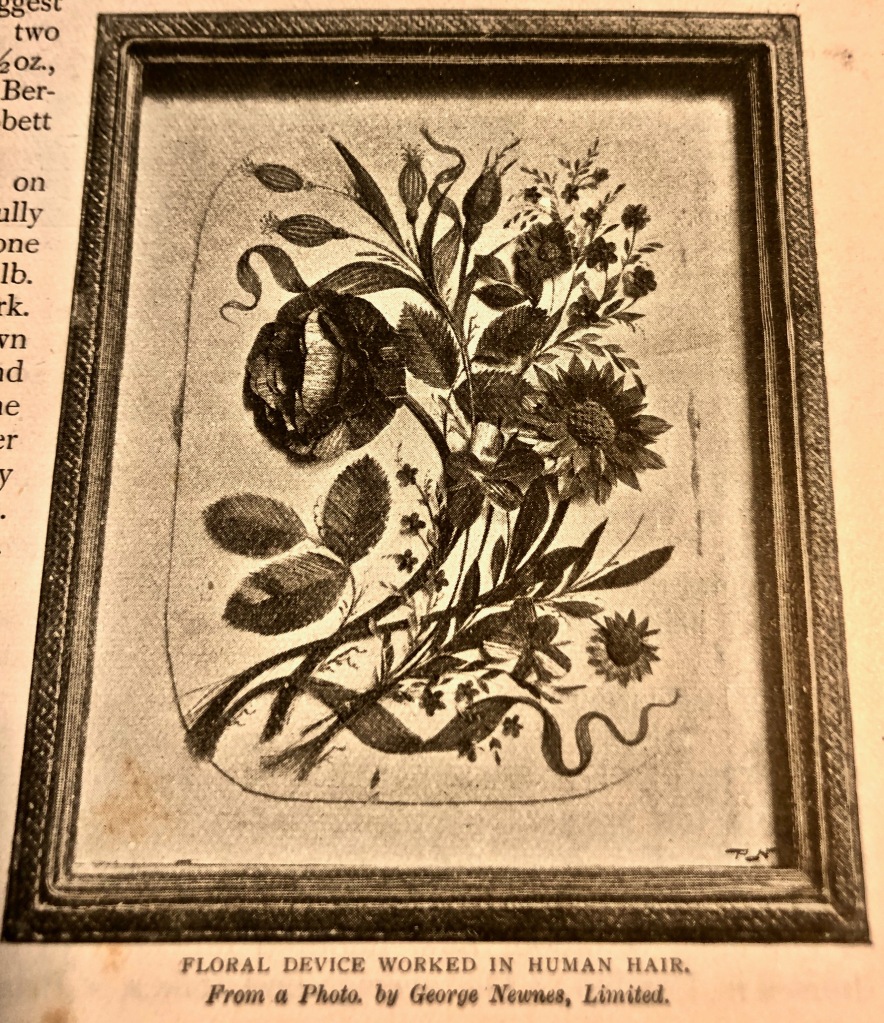



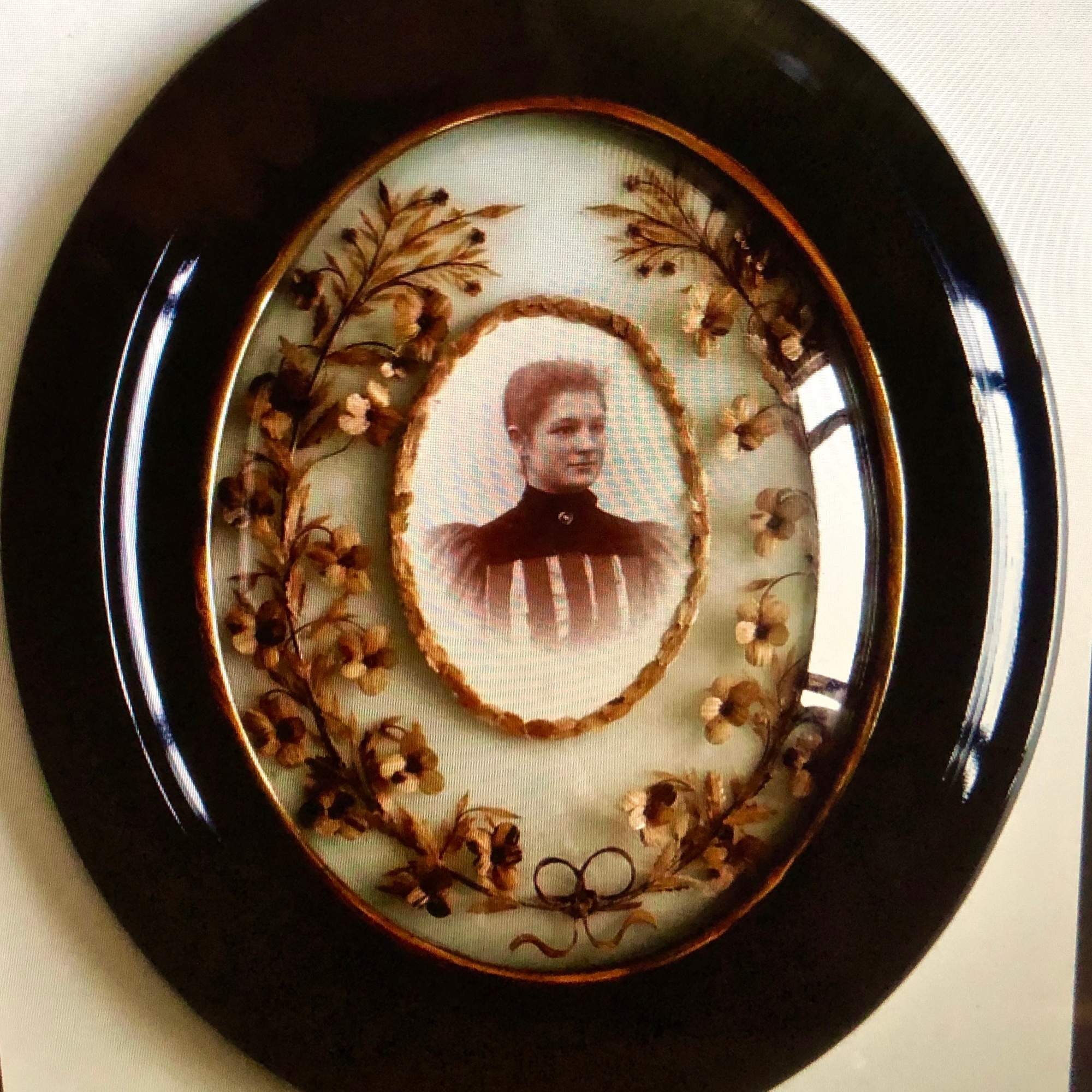

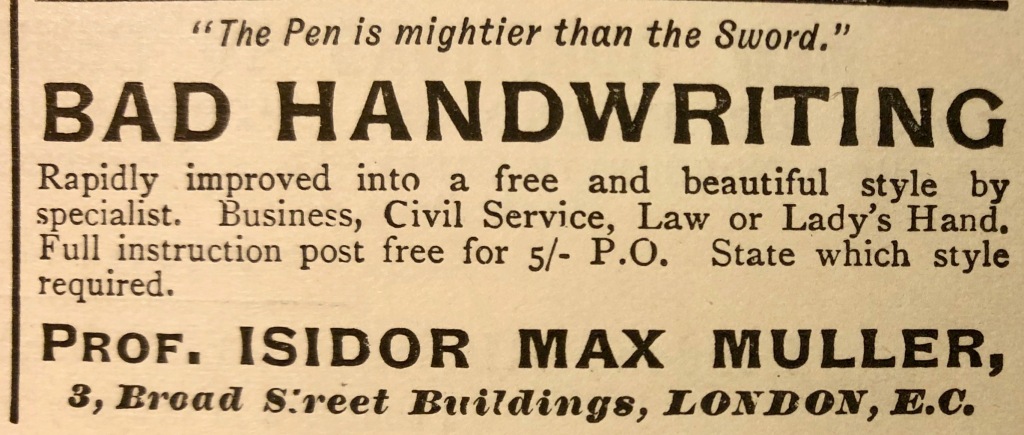

“Wrong question,” says Barnard Collier on Quora. “The right one may be: Why can’t we distinguish between male and female handwriting?
Our company www.graphologyconsulting.com has for almost a quarter century collected, analyzed, and evaluated the handwriting of more than 130,000 medical doctors and nurses worldwide, plus an equal number of people from various professions and walks of life, and among many financial classes, and if there was or is, at present, a way to pin
point the difference on a gender-based scale, we haven’t found it. Nor has any other expert biometric graphologist, and pattern recognition tests may enjoy a 6 to 4 chance of deducing gender from pixel-levelscans and associated algorithms.
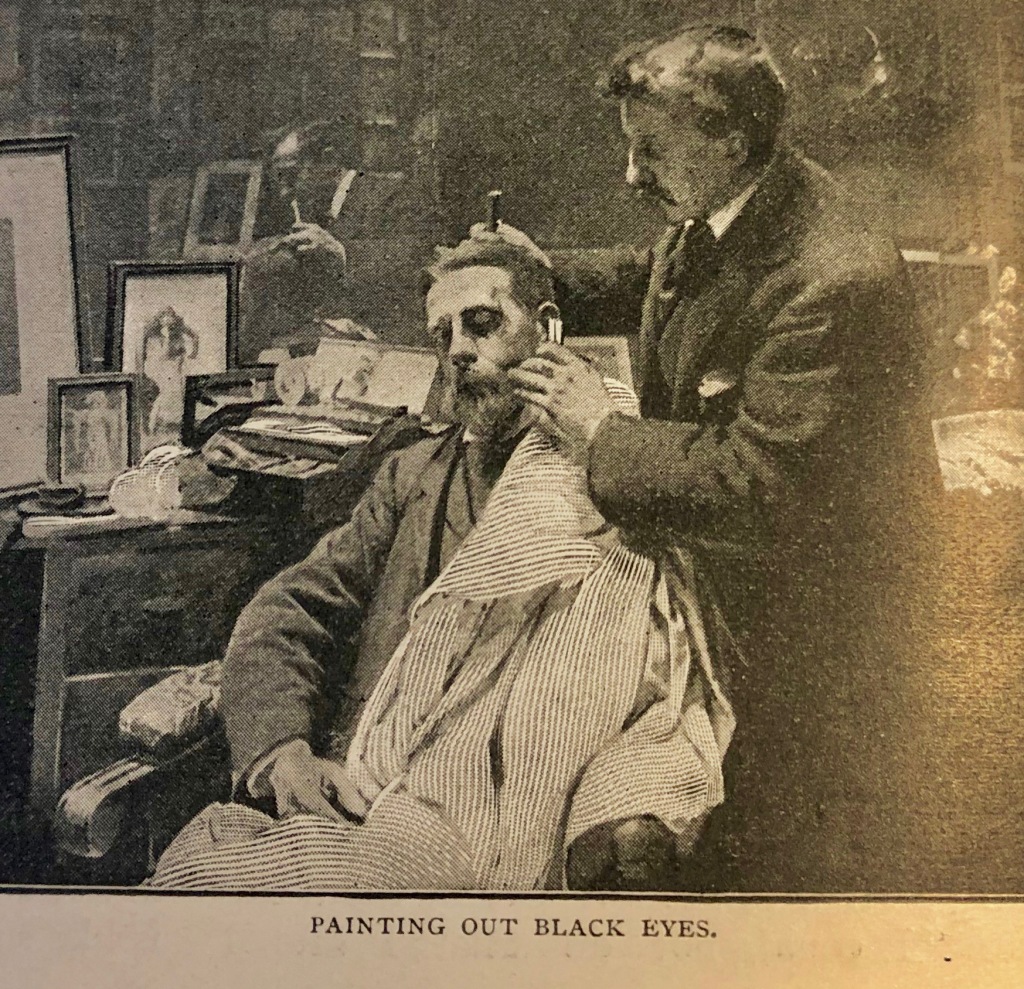
The photo above shows Mr. W. Clarkson, a black eye artist of seventeen years experience. Tools include greasepaint of two hues, lily powder, and carmine. The unaffected eye is painted to match. The process takes about half an hour and lasts for a week. Mr. Clarkson gave a few examples of the assortment of antics that bring patrons to his door.
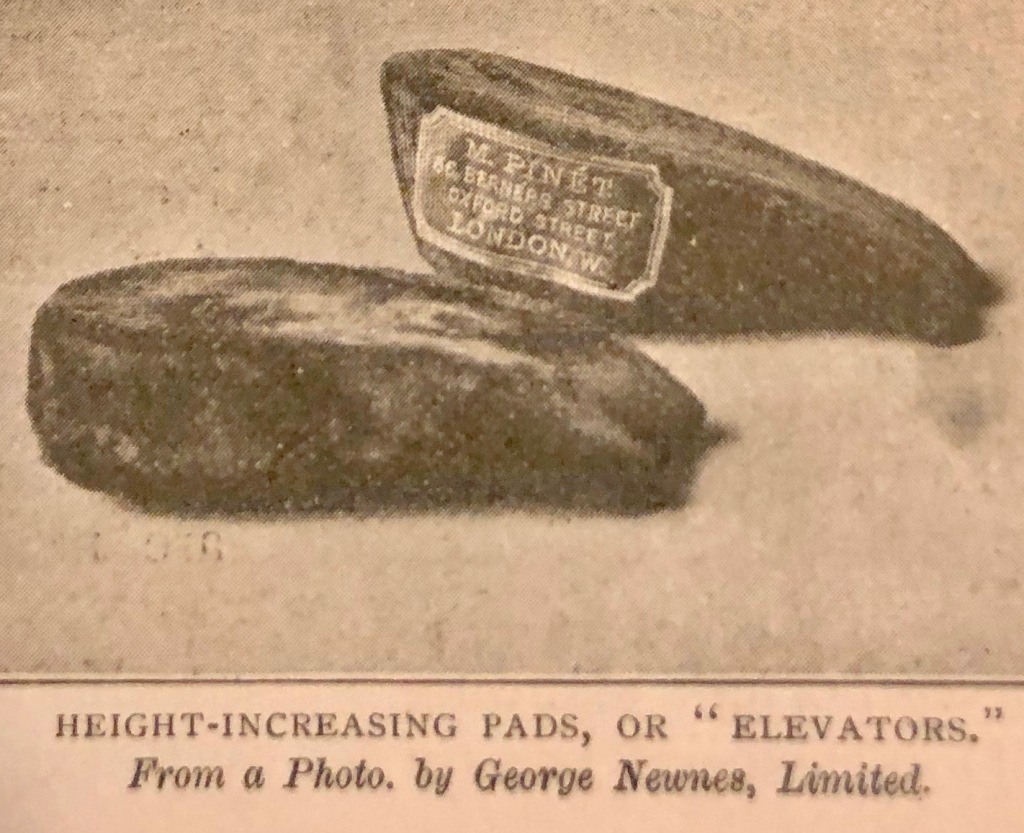
M. Pinet of Berner Street, W. is a professional height increaser, a feat he undertakes with two methods. (Both of these continue to this day, though no one seems to be claiming the occupation, per se, on 2020 taxes.) Method one involves plush covered pads, pictured, which can be moved to from shoe pair to pair. Method two is accomplished with special boots, which M. Pinet explains can raise you as far as SIX INCHES.
Who are the customers?

The professional height increaser tells a story about a man who left his elevator pads in his boots when he put them outside his hotel room door to be polished. Of course they came back minus the pads and “the gentleman was confined to his room,” because he didn’t want to make inquiries about them. When he did leave, he was somehow “lower” in the eyes of his friends. M. Pinet says the moral is “KEEP DUPLICATE PAIRS!”
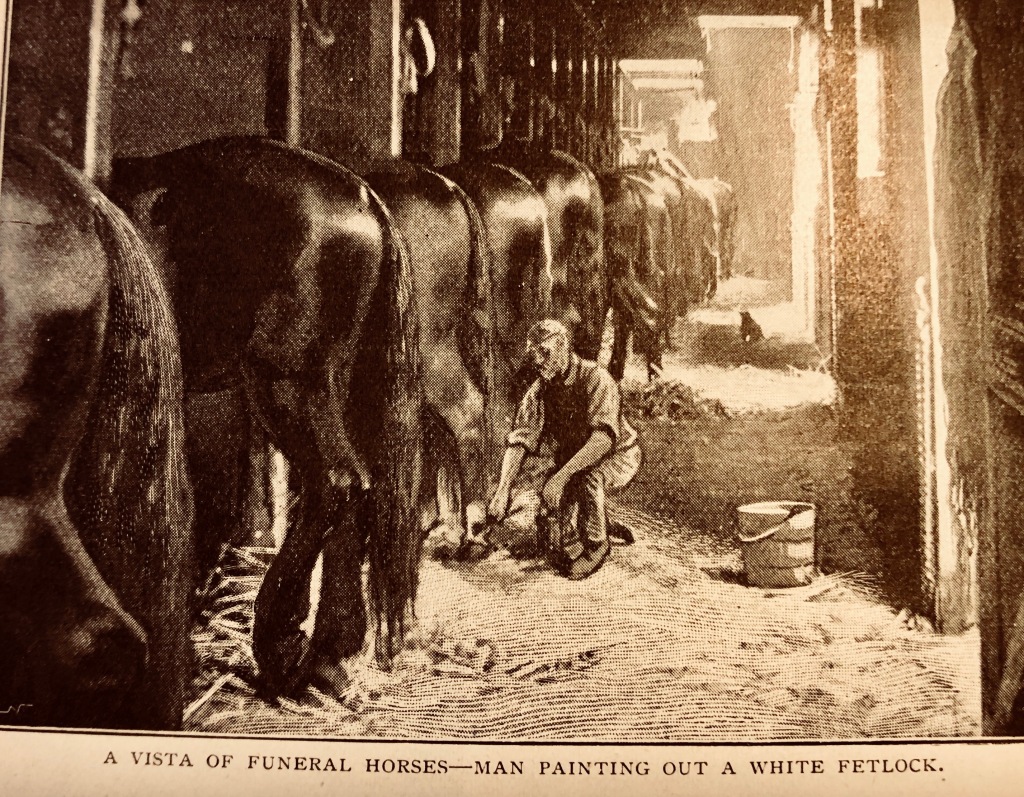
The average undertaker keeps “neither horses nor coaches, but hires these from people like Mr. Seaward, who keeps a hundred funeral horses,” according to the Gazette. These would account for just one hundred of the nine hundred funeral horses in London in the late 1890’s. These stately, expensive, and often feisty animals are imported from Friesland and Zeeland, Netherlands provinces. Seaward claims that, once, at a very small funeral, “the coachman lent a hand with the coffin; but in his absence, the horses ran amuck among the tombstones, which went down like ninepins in all directions.”
In the photo, one of Seaward’s men paints a horse’s white fetlock with a black mixture in preparation for a funeral procession. A white star on the forehead is simply covered with the animal’s own foretop. To the right in the photo hangs a fake horse tail, necessary when Seaward uses one of his no-tailed Dutch Black horses to create a kind of composite horse. The tail is strapped on for funerals, but at night it can be discarded so the horse can take people to and from the theaters.
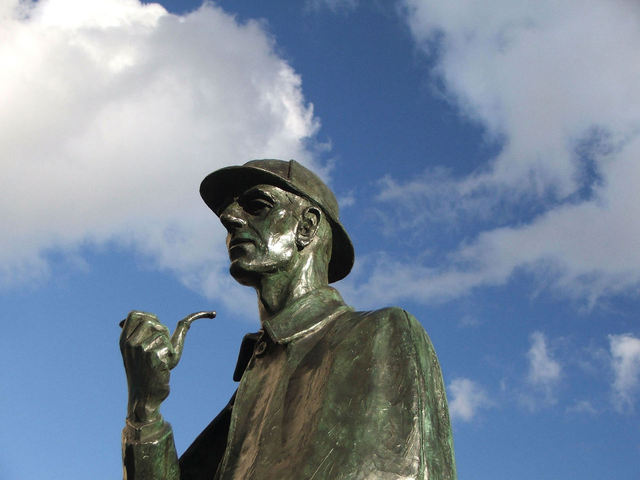
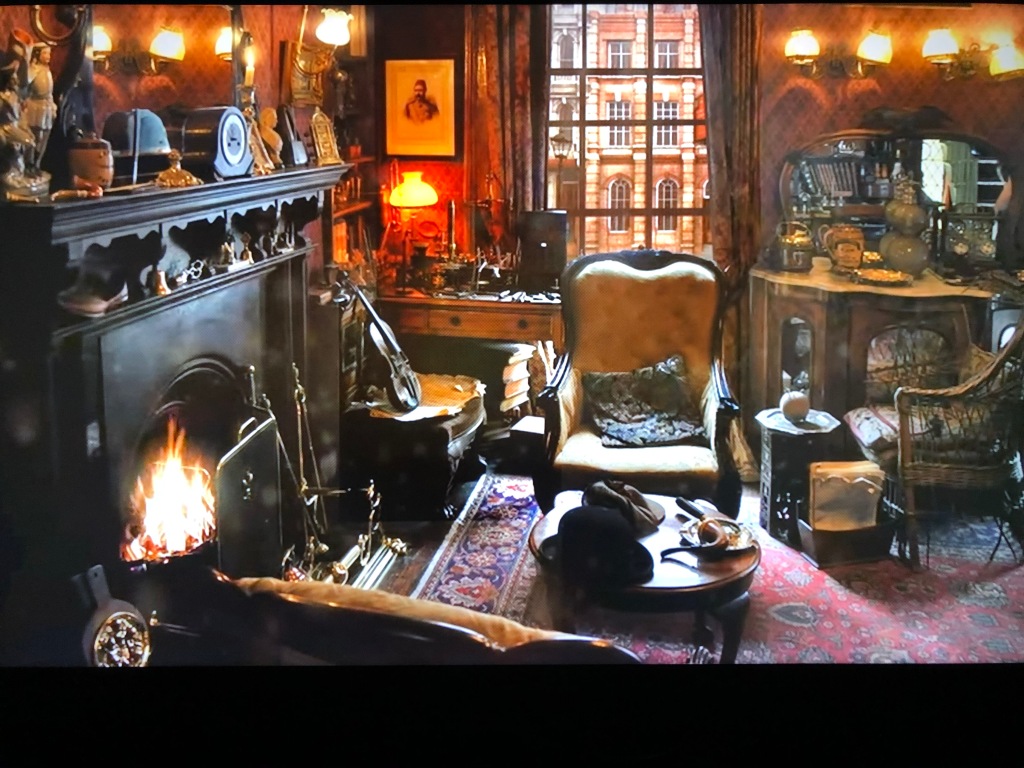
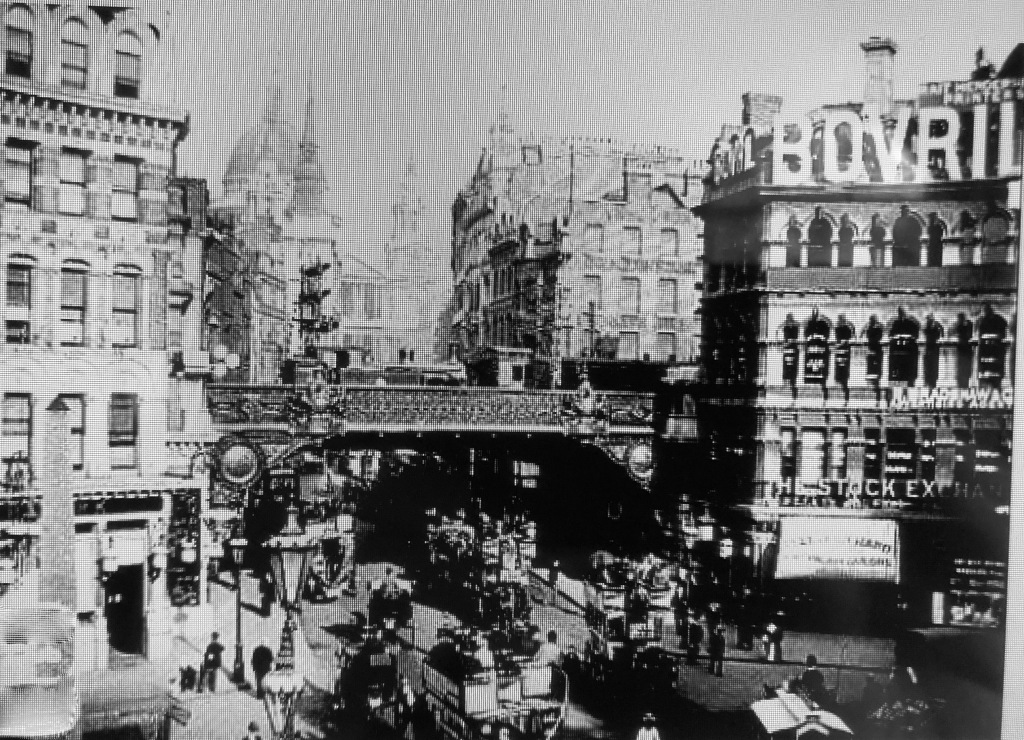
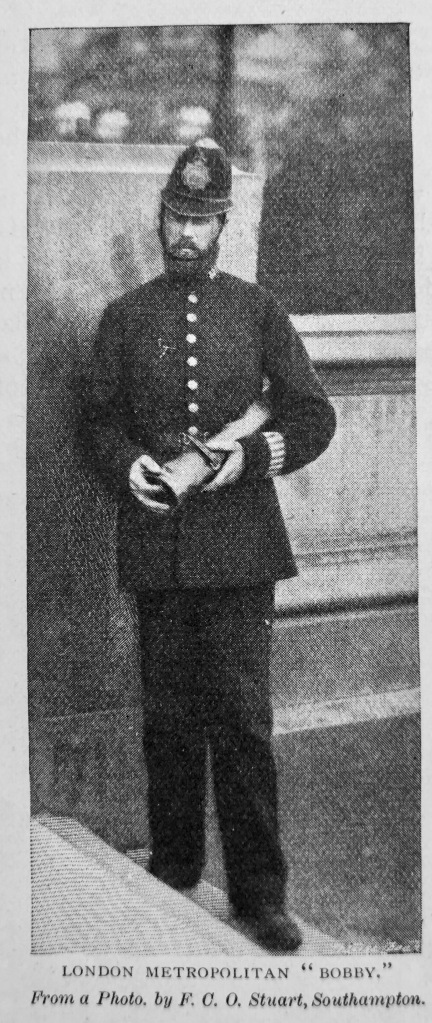
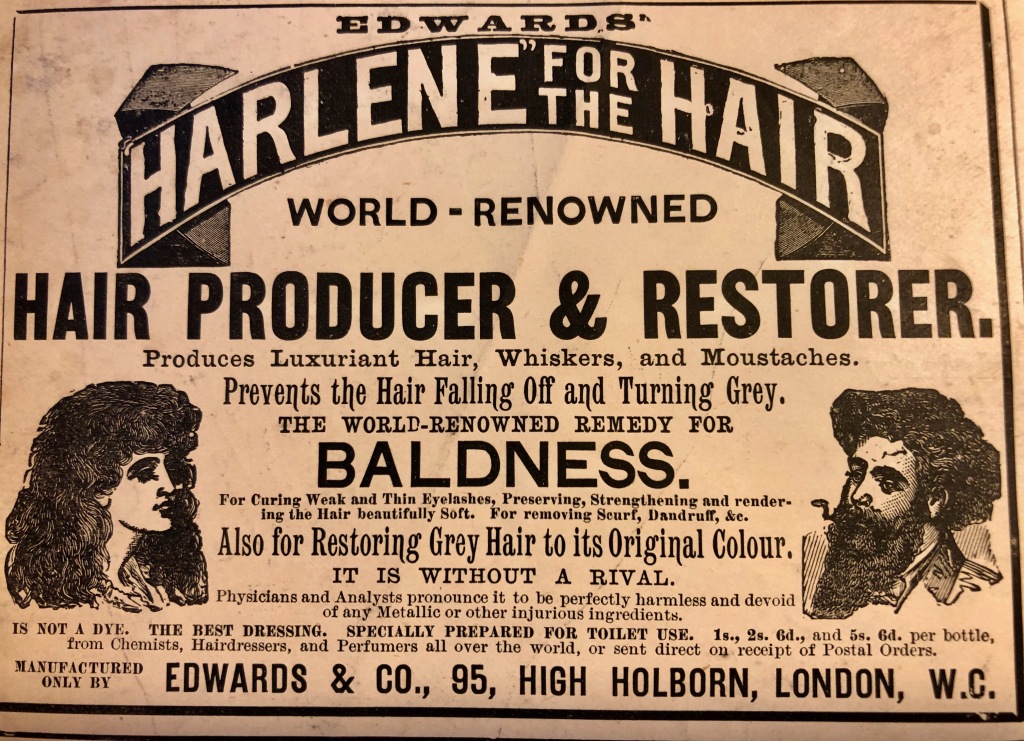
* from John Stoven: https://www.cbsnews.com/news/what-age-is-considered-old-nowadays/
https://www.propertiuspress.com/our-bookstore/Sherlock-Holmes-and-the-Remaining-Improbable-by-Susanne-Dutton-p310417036

“Holmes was delighted. ‘I have my eye on a suite in Baker Street,‘ he said. … You don’t mind the smell of strong tobacco, I hope?’
‘I always smoke ‘ship’s’ myself,”Watson answered.
‘That’s good enough. I generally have chemicals about, and occasionally, do experiments. Would that annoy you? … Let me see, what are my other shortcomings? I get in the dumps at times, and don’t open my mouth for days.’
That very evening Watson moved his things from the hotel in the Strand where he had been living a comfortless and meaningless existence.” Excerpted from: Sherlock Holmes of Baker Street, by William S. Baring Gould, WING BOOKS.
When they met Mrs. Hudson, the landlady, Holmes saw immediately a mourning pin at her collar, not more than half an inch long, set with a zigzag design of what was surely human hair.

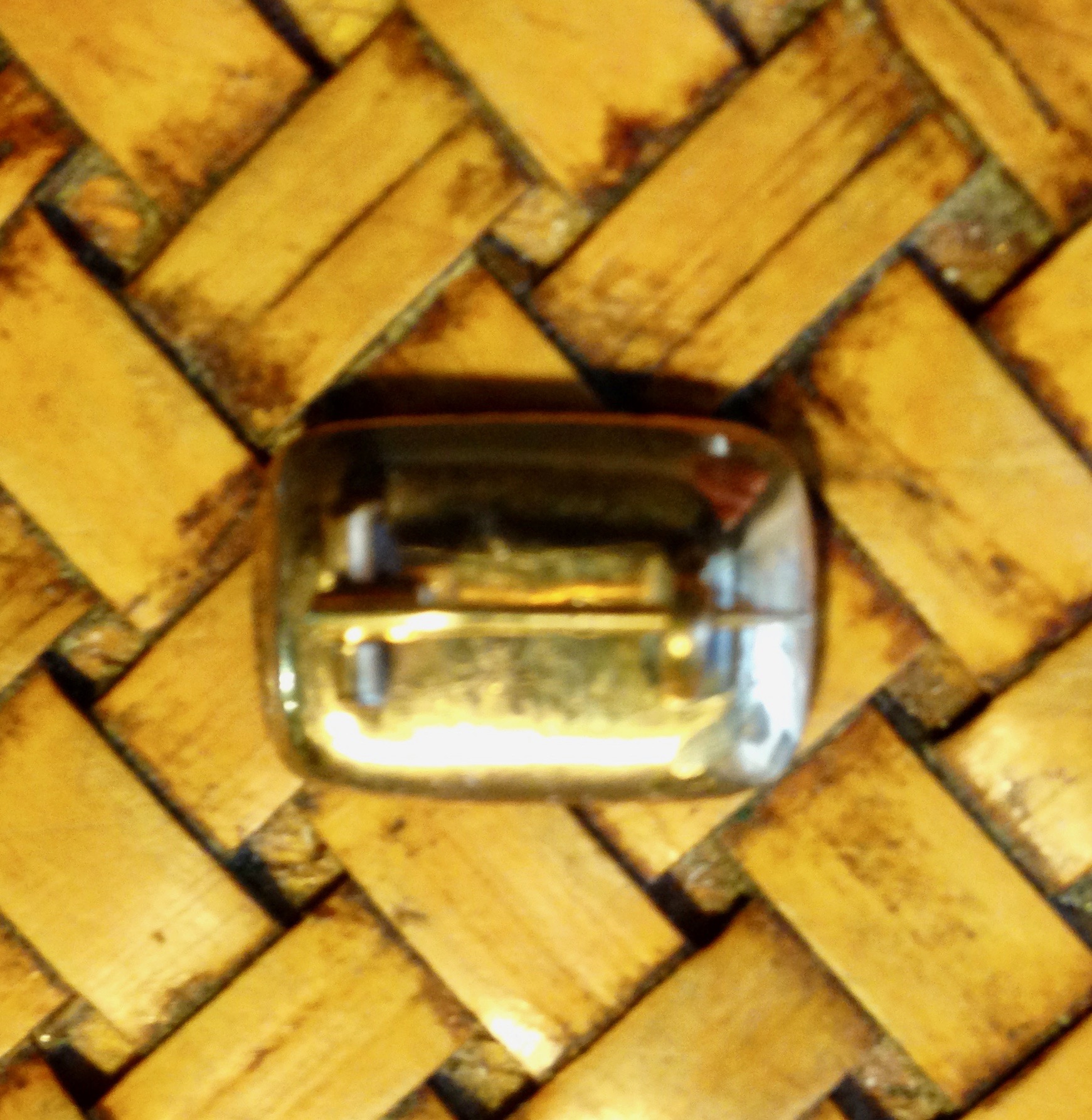
Had she lost a child? Was she a widow? He did not mention it, initially, though he was personally familiar with the tradition of bereavement jewelry. His mother, Violet Sherrinford Holmes, b. 1824, treasured a ring crafted in the more macabre style of the Georgian era, a tiny skull and cross bones set in a circle of pearls.
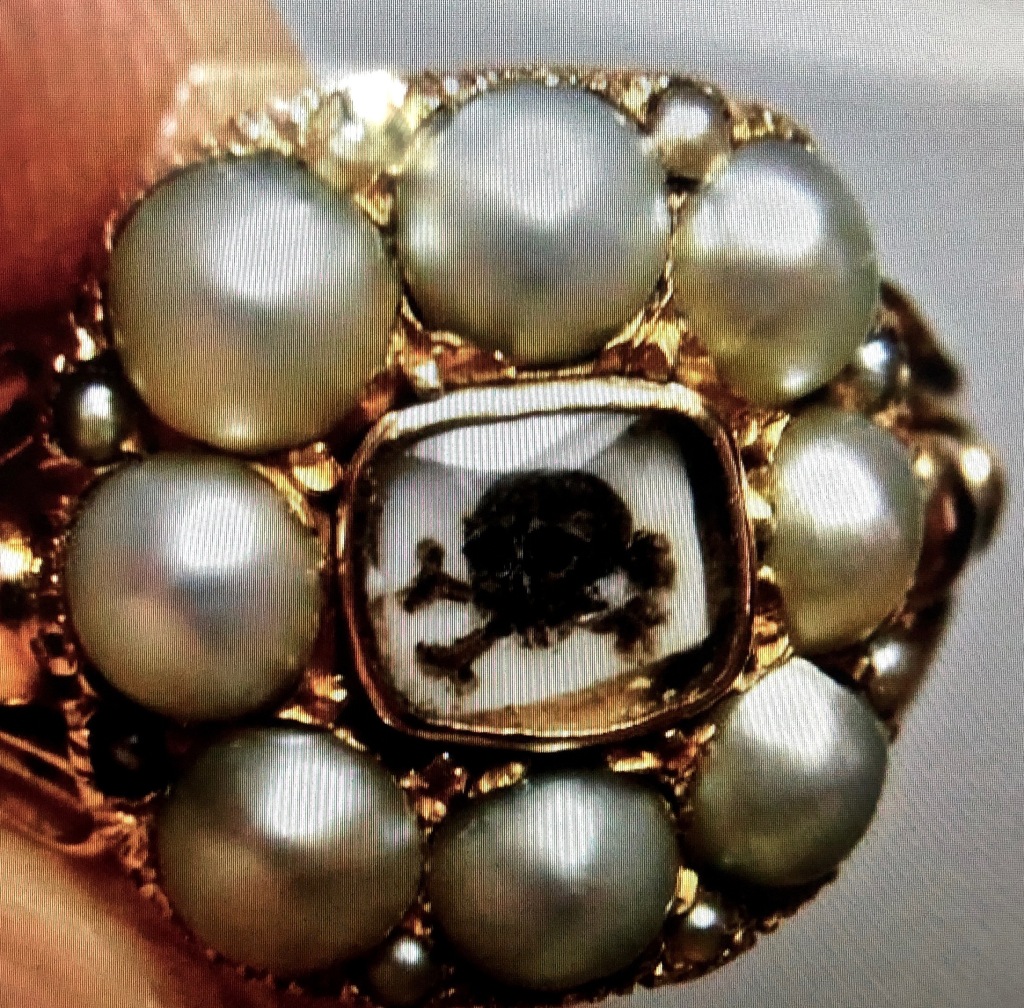
 I love the research. That’s why writing historical fiction is fun, but also more challenging. Research takes me down some grizzly paths. Last night I was enjoying the scrumptious butternut squash soup at a little cafe, using my lone dinnertime to look up both big and little story details on Google. I was immersed when an acquaintance called from across the room. I went over to say hello. When I returned I found I’d left Apple open to a page describing the technical aspects of “slamming” cocaine into a neck vein, including graphics. Do you aim up or down? What size needle? What difference does it make? As I reseated myself, I was greeted with a variety of looks, most on the quizzical side, fortunately. No one seemed concerned. I don’t present as addict material. Not that kind, anyway. In case you’re wondering, never ever aim down, towards the heart. That will be the last thing you aim anywhere.
I love the research. That’s why writing historical fiction is fun, but also more challenging. Research takes me down some grizzly paths. Last night I was enjoying the scrumptious butternut squash soup at a little cafe, using my lone dinnertime to look up both big and little story details on Google. I was immersed when an acquaintance called from across the room. I went over to say hello. When I returned I found I’d left Apple open to a page describing the technical aspects of “slamming” cocaine into a neck vein, including graphics. Do you aim up or down? What size needle? What difference does it make? As I reseated myself, I was greeted with a variety of looks, most on the quizzical side, fortunately. No one seemed concerned. I don’t present as addict material. Not that kind, anyway. In case you’re wondering, never ever aim down, towards the heart. That will be the last thing you aim anywhere. 